A list of the best places to visit in Reykjavik (pron. rake • ya • veek) was easy to compile. Iceland’s capitol is a unique blend of small town Europe and a burgeoning multi-cultural city. With a population just over 197,000 the greater Reykjavik region is hardly a metropolis, but that populous consists of residents from over 100 different countries. This diversity is reflected in the many shops, restaurants and entertainment throughout the city. The historical isolation of Iceland has helped its capital retain a unique persona. Reykjavik is a relatively flat city and it is laid out fairly well so you won’t risk getting too lost and, even if you do, the people are nice and quite accommodating.
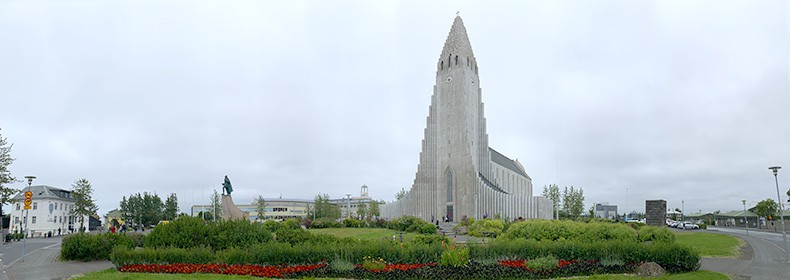
Most everyone in the city (and many in the country) speaks at least Icelandic and English so communicating is quite easy for most tourists. The restaurants offer a wide variety of cuisine including Icelandic versions of such staples as pizza, hamburgers (even lamb burgers), fish & chips and the Reykjavik specialty, hot dogs. Reykjavik has an excellent bus system but avoid taxis. There is no Uber or Lyft in Iceland so the taxis enjoy something of a monopoly. They are efficient, kind and ethical but very pricey. A common way for locals to move about the city are e-scooters. For lodgings, there are several excellent hotels, hostels, and guesthouses available in the city.
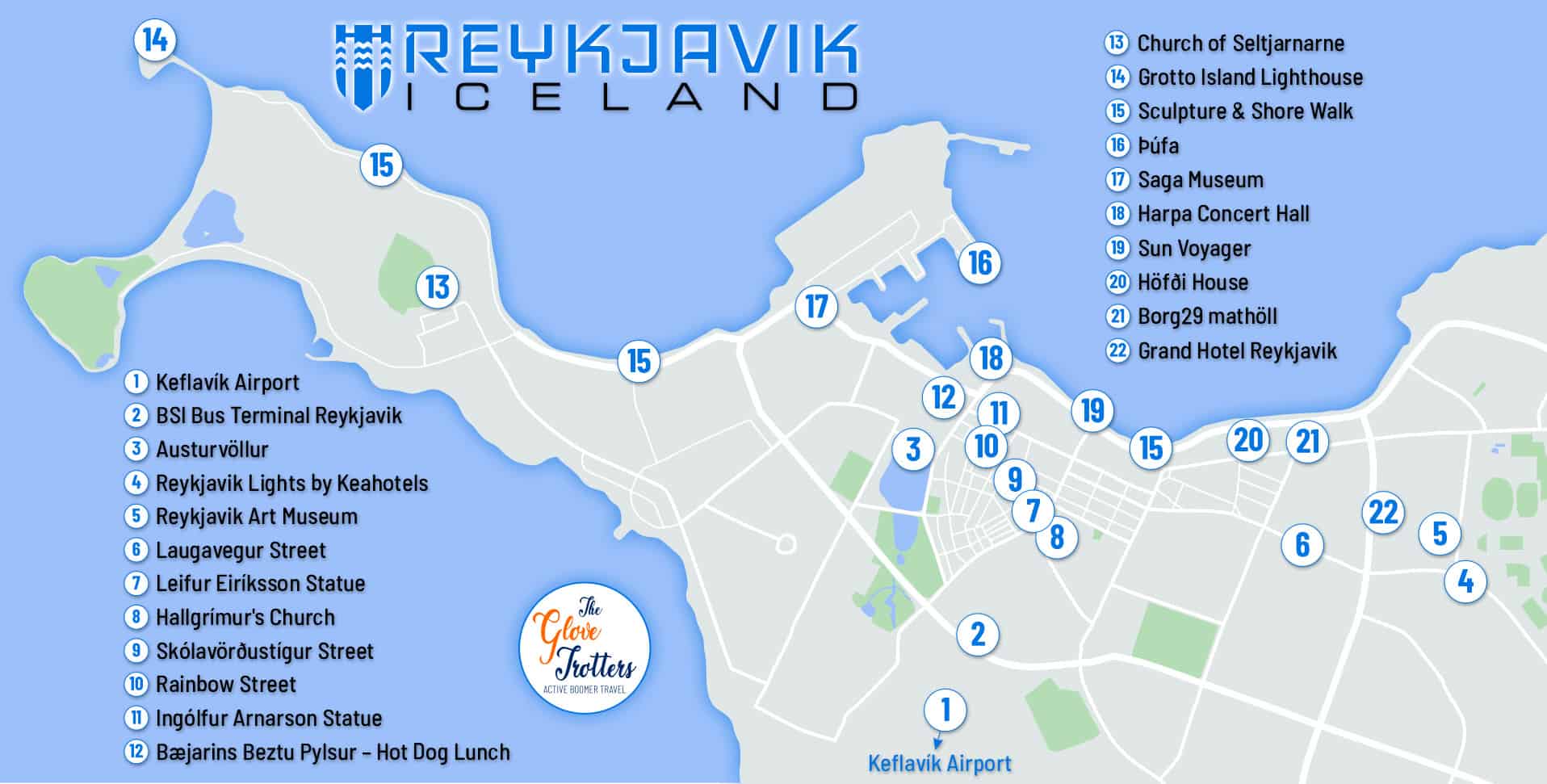
We walked Reykjavik in a single day (9a-6p) but we wouldn’t recommend that pace for everyone. We never felt rushed but it was an awful lot of walking (10.8 miles/17.3 km). We visited everyplace on this list of the best places to visit in Reykjavik and, honestly, not a single place was a disappointment.
Jump to a specific area.
Keflavík Airport
Pronounced: kah • fla • vik
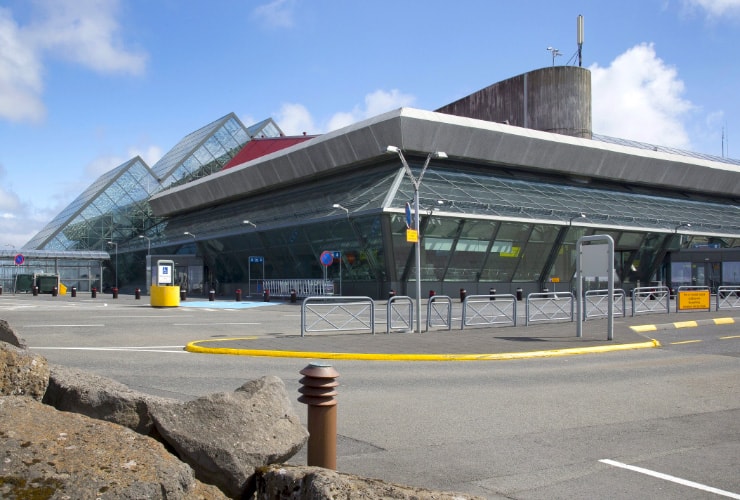
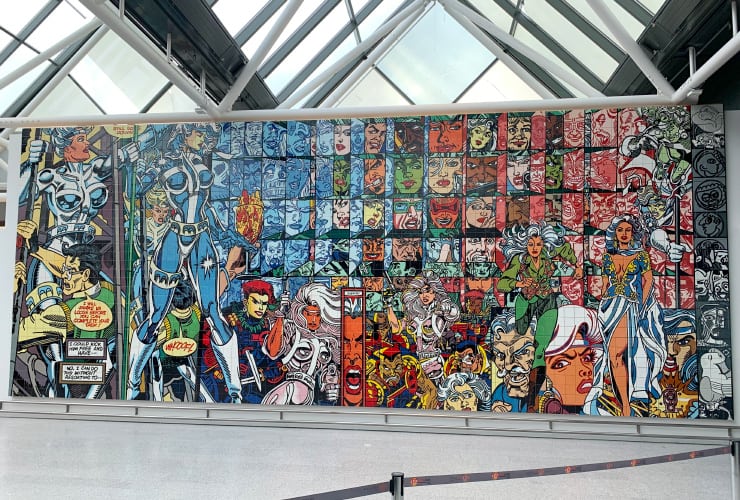
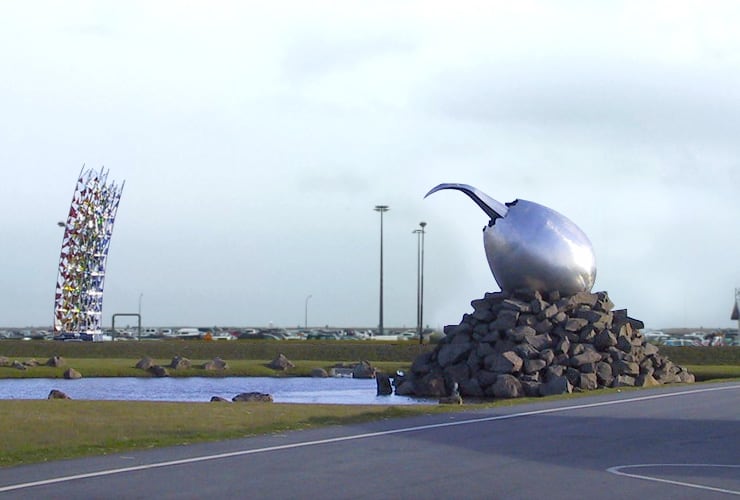
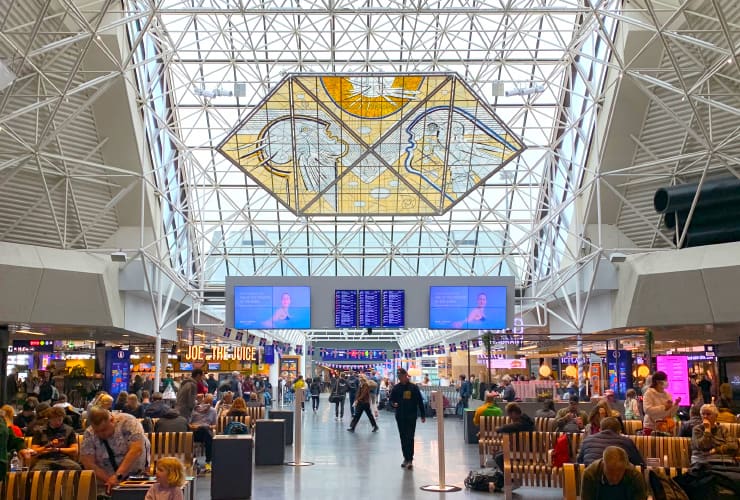
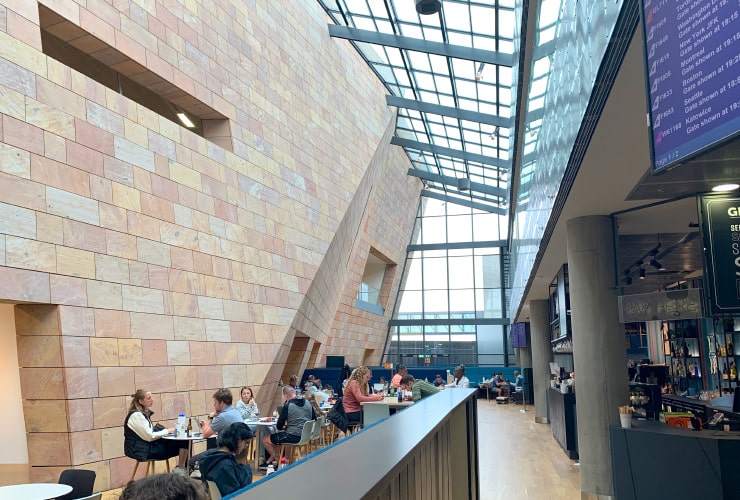
Keflavík Airport is Iceland’s only international airport and is located about 31 miles (50 km) southwest of the capital, Reykjavik. It is the hub for Icelandair but also a popular stopover for flights from the USA to mainland Europe. In fact, the airport was originally built by the US military during WWII turning over to the Icelandic government in 1951. When you arrive there is a big treat for comic book fans in the form of a large mural that includes a cool homage to Picasso along the right border. In front are two rather unique sculptures, Rainbow, by Icelandic artist Rúrí is the tallest work of art in the country and the fascinating Þotuhreiður, or Jet Nest, which depicts a jet plane hatching from a large egg resting on a mound of volcanic rocks.
BSI Bus Terminal Reykjavik
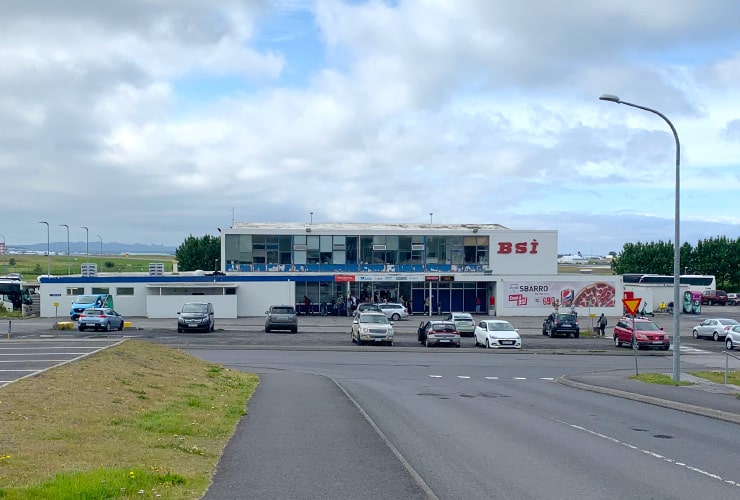
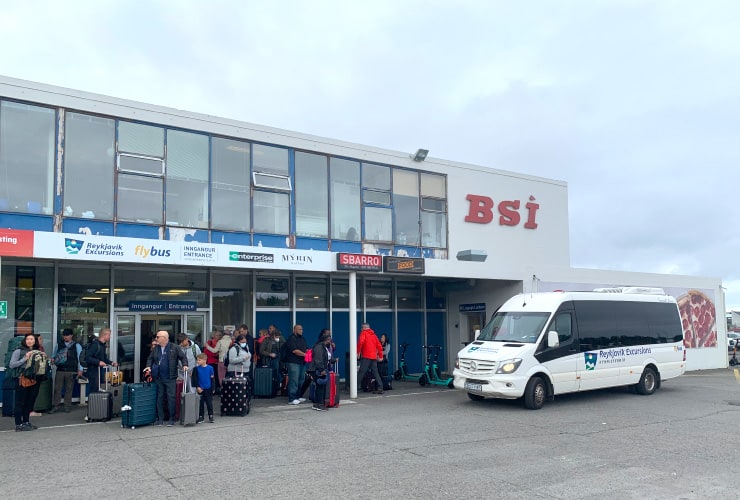
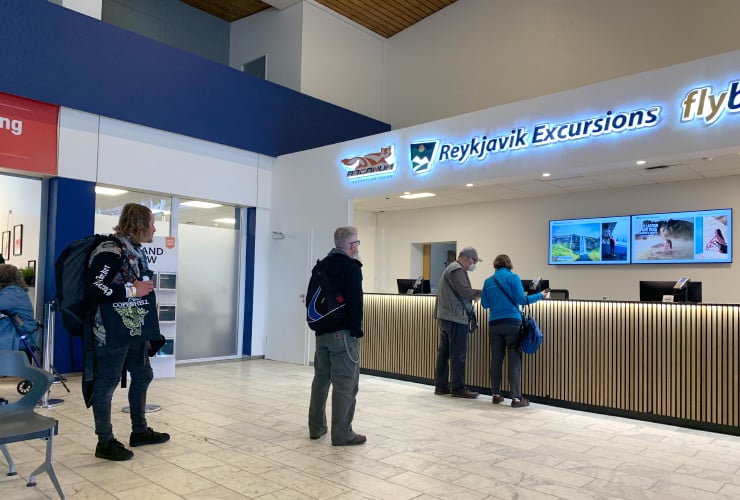
Unless you’ve rented a car, when you first arrive in Reykjavik it’s likely on a FlyBus from the airport that drops you off at the BSI Bus Terminal. From there you can connect to your destination in town. While it may not be one of the best places to visit in Reykjavik it is most likely a necessity. The bus system in Reykjavik is excellent, efficient and relatively inexpensive. If you’ll be in town a few days it might be worth it to purchase day passes. On our last day we had a problem with the automated luggage lockers and they allowed us to store our luggage in a secured space while we explored for a few hours.
Austurvöllur
Pronounced: oosh • doo • lug • ish
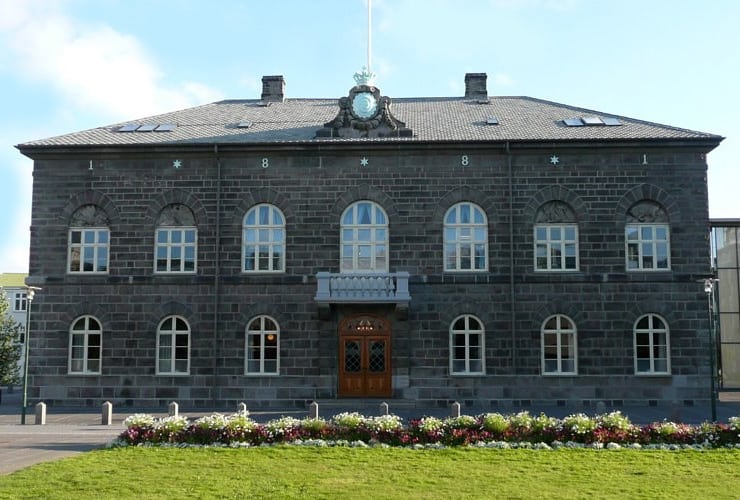
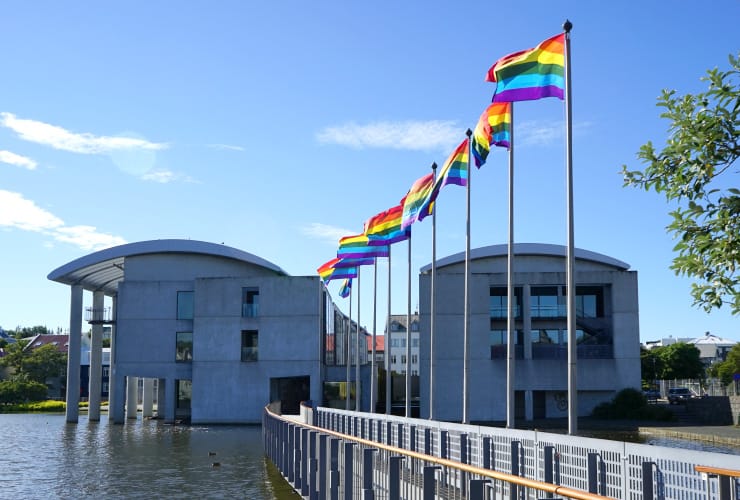
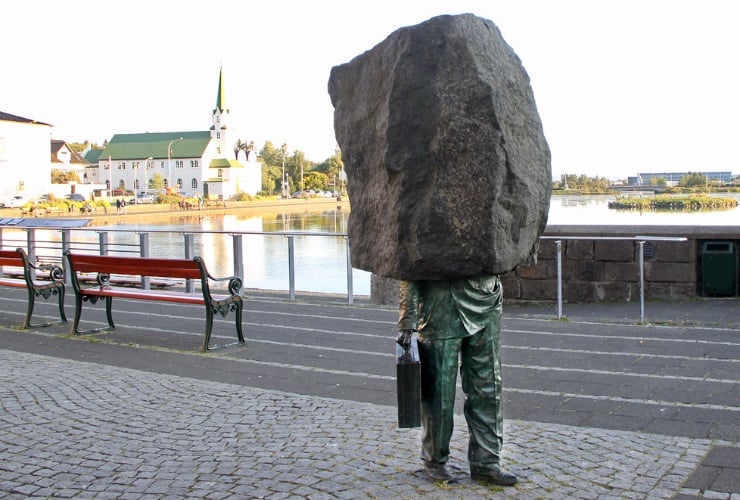
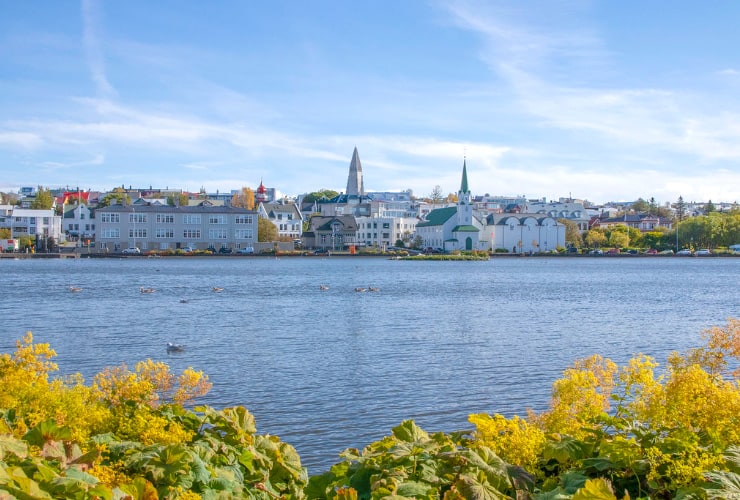
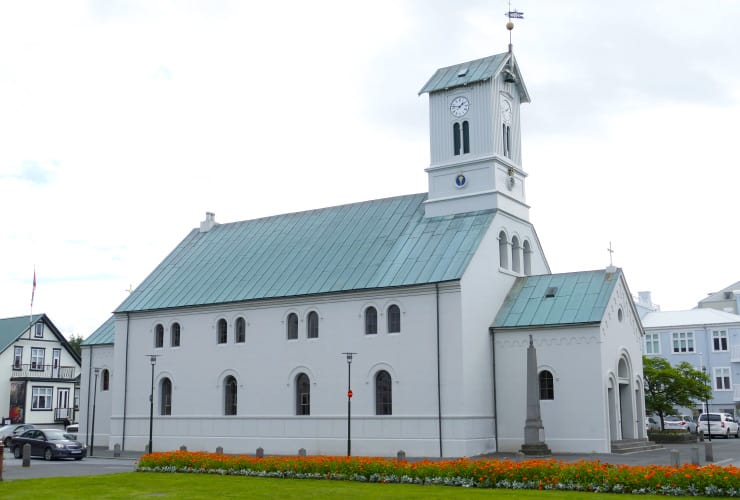
Austurvöllur is a public square surrounded by the seat of the Icelandic government, some fascinating monuments and a pond dating back to 800 AD. This area is home to the Alþingi (pron. oush • pinge) Parliament House, Alþingisgarðurinn (Old Parliament’s Alþingi garden), the Rekjavik City Hall and the Prime Minister’s office. There are several unique statues including the Monument to the Unknown Bureaucrat, the Black Cone, Monument to Civil Disobedience and the more standard Jón Vídalín statue. Reykjavik City Pond, known locally as Tjörnin, is split in two by a cross bridge and is perfect for a morning run or an evening stroll. There are a few other public spaces like the beautiful Hallargarðurinn park and Víkurgarður, one the city’s oldest public parks. Finally, there is the official cathedral of Reykjavik, the beautiful 18th century neoclassical Reykjavik Cathedral with its signature green-colored roof. Austurvöllur, and all of its surrounding attractions, is definitely one of the best places to visit in Reykjavik.
Reykjavik Lights Hotel
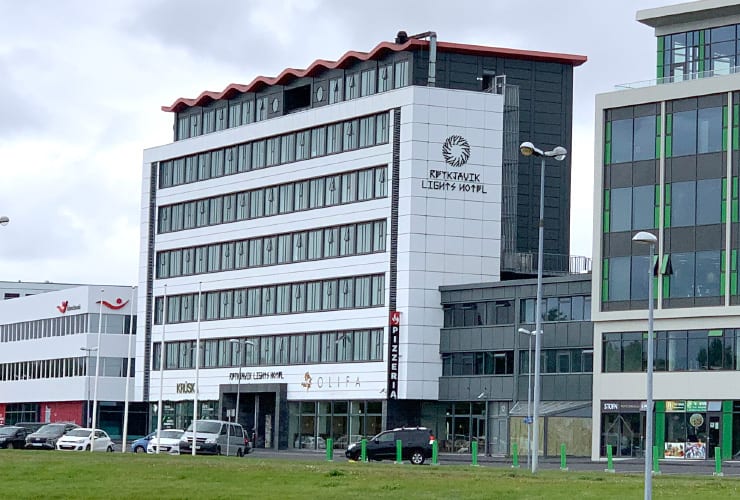
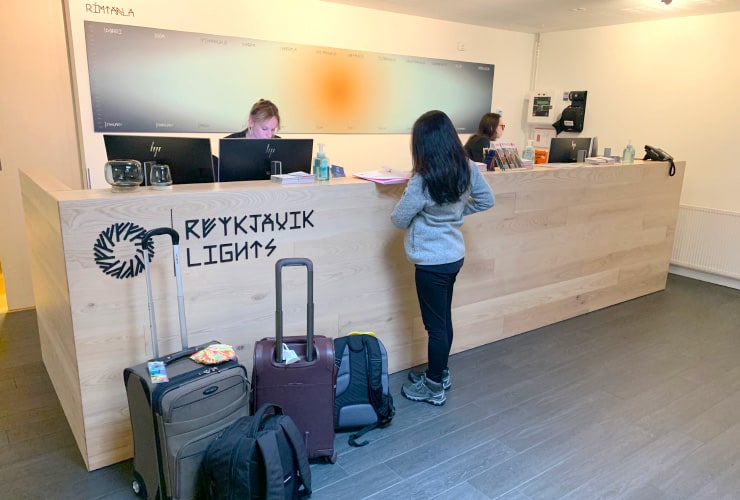
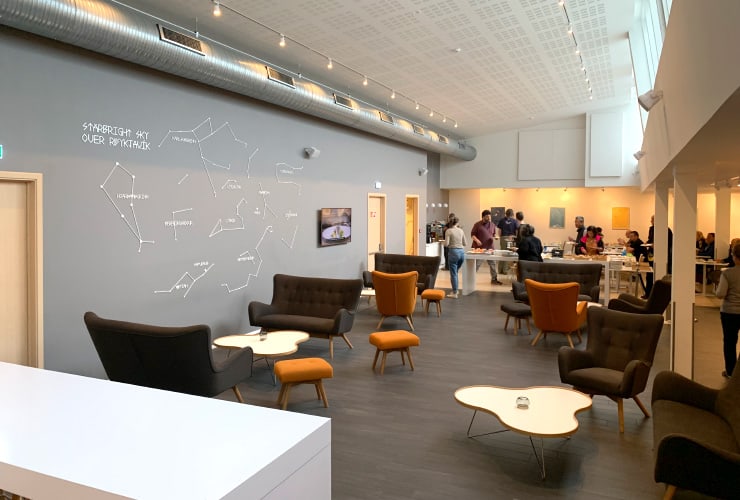
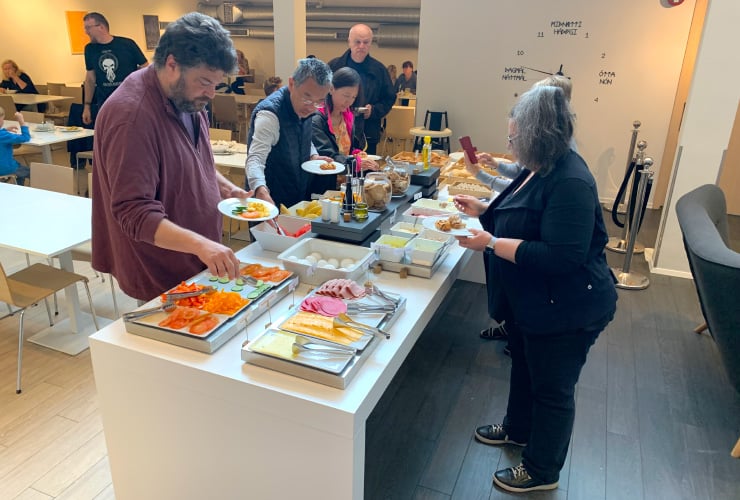
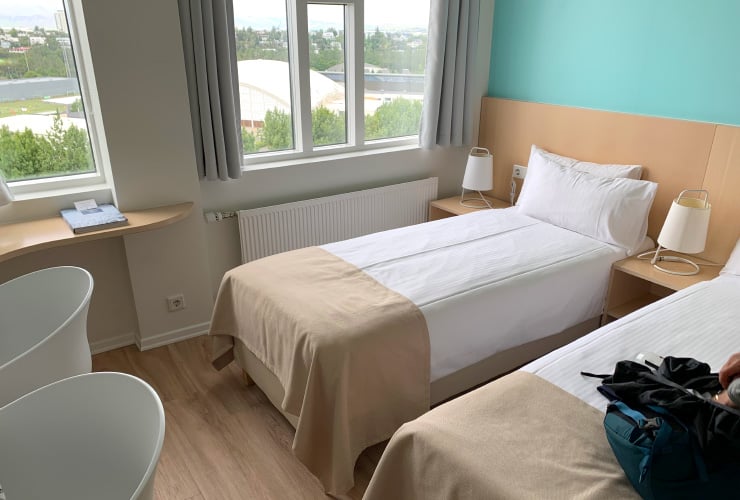
During our two nights in Reykjavik we stayed at the Reykjavik Lights Hotel. While it wasn’t ideally situated to explore downtown it did allow us to see parts of the city probably not seen by those staying at the wonderful Hôtel Leifur Eiríksson or somewhere else nearer the heart of the city. As a hotel we heartily recommend the Reykjavik Lights with its clean (quiet) rooms, excellent views of the Laugardalsholl Sport Centre, sumptous free breakfast and a graciously accommodating front desk staff. There is a nice lounge area, a small business center and an open bar with a daily happy hour.
Reykjavik Art Museum
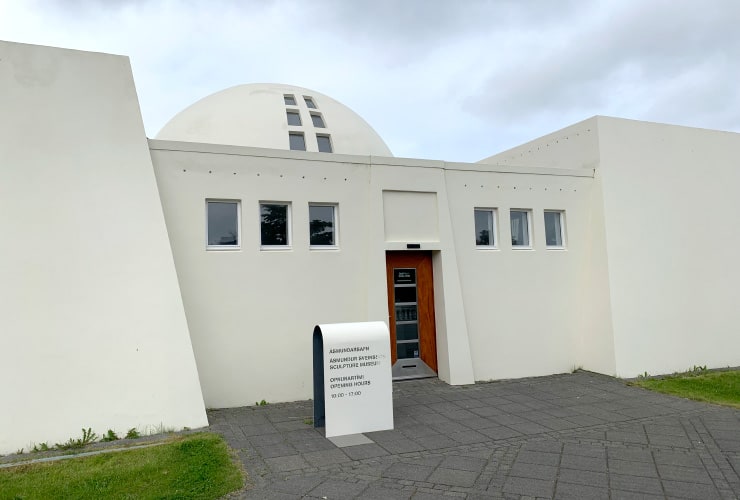
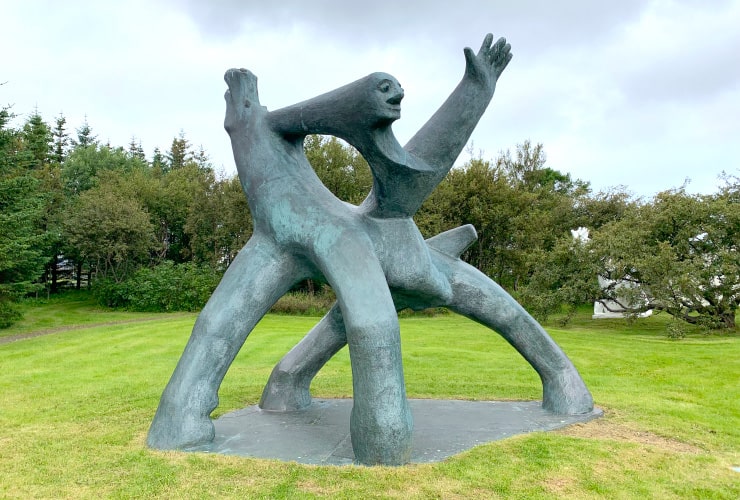
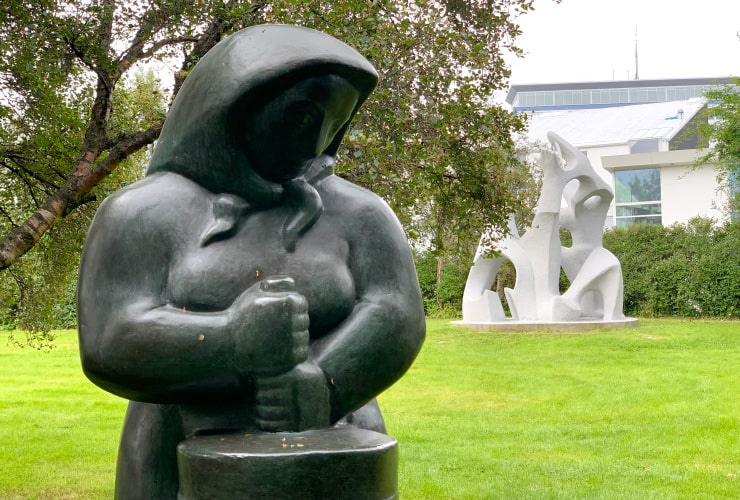
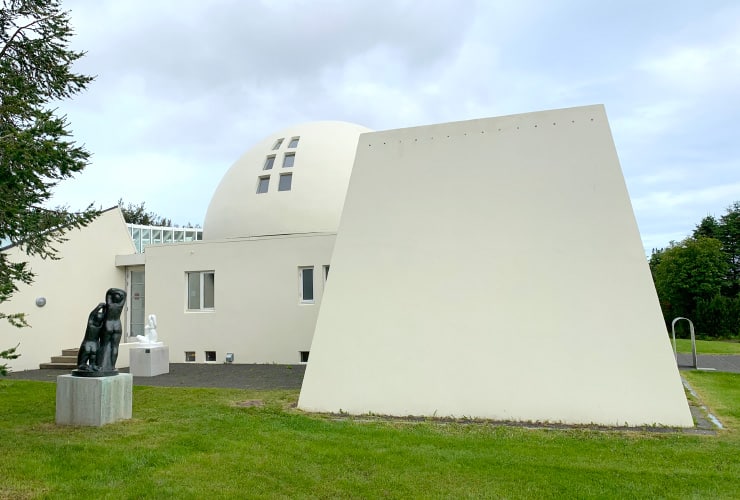
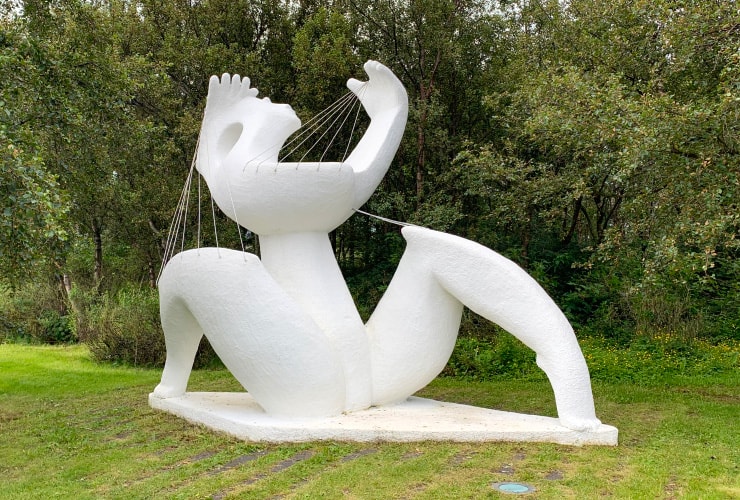
A few minutes away from the Reykjavik Lights is the wonderful Reykjavík Art Museum Ásmundarsafn. We arrived too early (and came back too late) to take a tour inside but the exterior is a modern art lovers delight. Formerly the home and working studio of Icelandic sculptor Ásmundur Sveinsson the building, built from 1942-1950, is a piece of art in and of itself. From the high dome center to the varied shaped structures that surround it to the multitude of Sveinsson sculptures scattered around the grounds, the entire complex is a tribute to his creativity and art. The museum opened in 1983 and showcases the different periods Sveinsson experienced as an artist from his early focus on the human form to his later abstract pieces. The building and sculpture garden are always open to the public so make sure to include this on your list of best places to visit in Reykjavik.
Laugavegur
Pronounced: lou • va • roosh
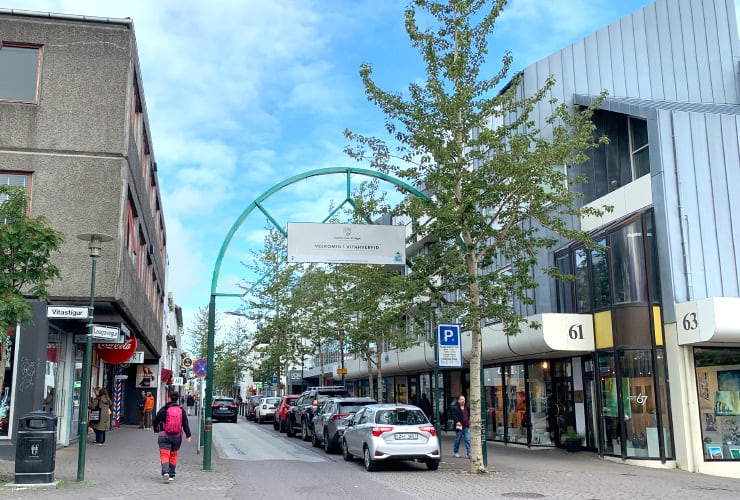
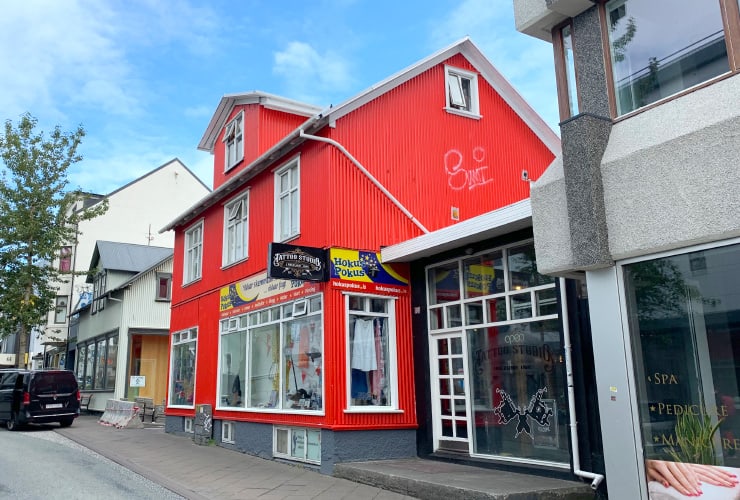
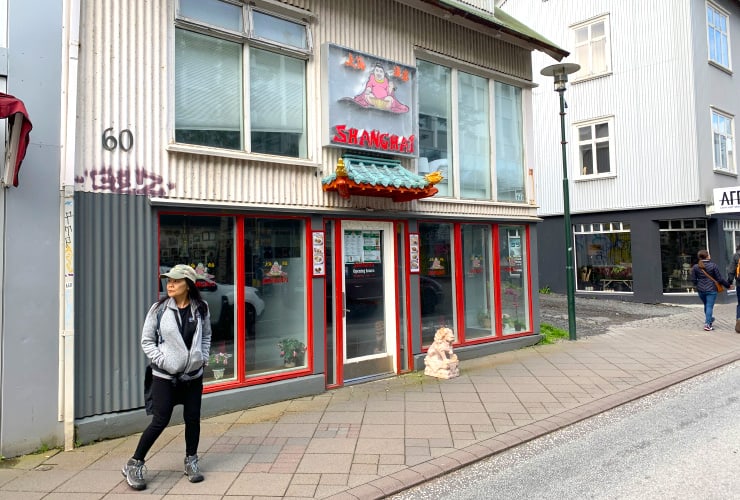
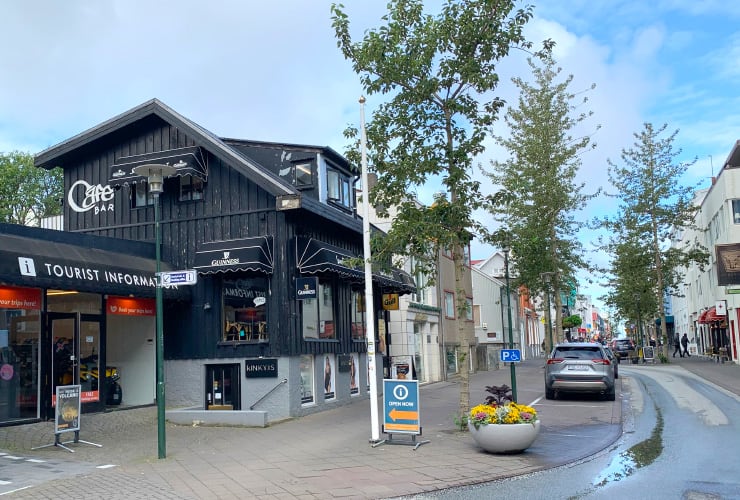
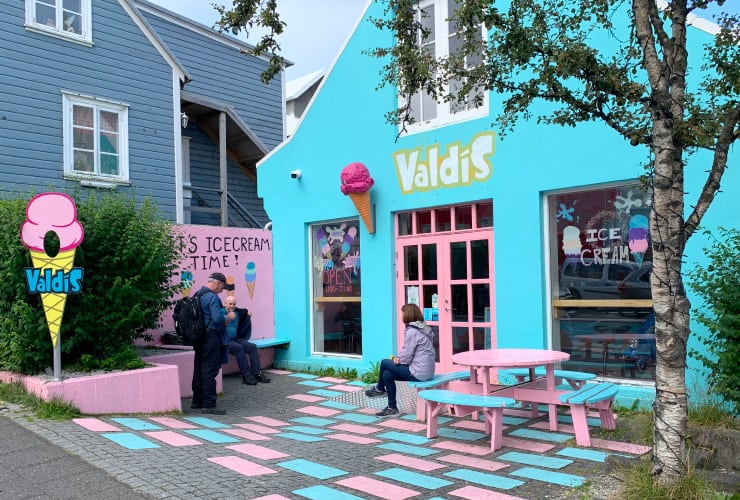
Laugavegur, constructed in 1885, is one of the oldest streets in Reykjavik and is considered the premium shopping street in the country. Approaching from the east, the shopping district begins at Rauðarárstígur with its Icelandic Horse Monument and extends all the way west to Frakkastígur. Starting at Vitastígur is the fashion and design boutique district of Lighthouse Village featuring museums, jewelry stores, hairdressers, art galleries, etc. Laugavegur is known for its multitude of restaurants that represent the city’s ethnic diversity from Shanghai restaurant (Chinese) and Rossopomodoro (Italian) to Arabian Taste (Syrian) and Meze (Turkish). Along with the usual array of cheap tourist traps, Laugavegur has a number of high-end boutiques as well as some wonderful second-hand and vintage shops to choose from.
Leifur Eiríksson Statue
Pronounced: lay • ver • a • veek • son
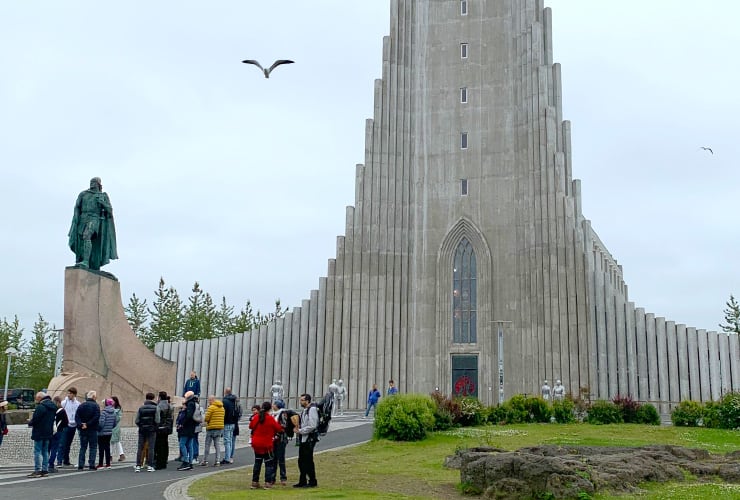
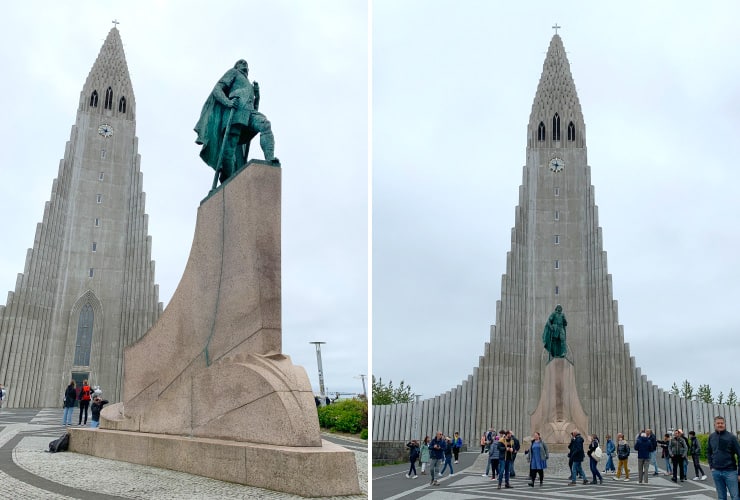
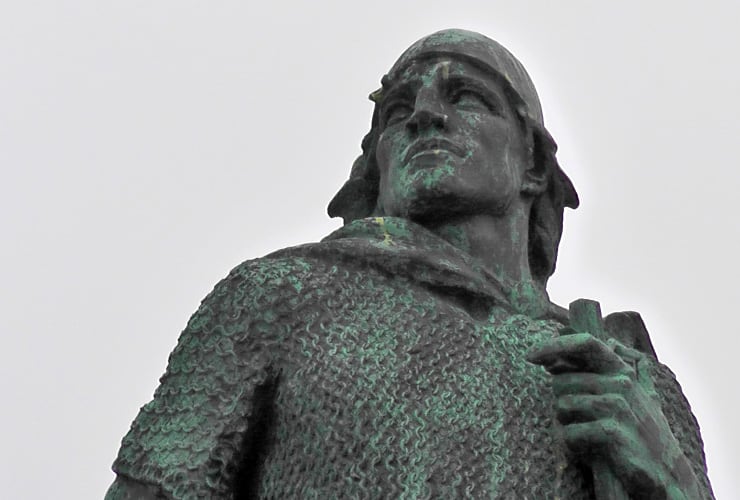
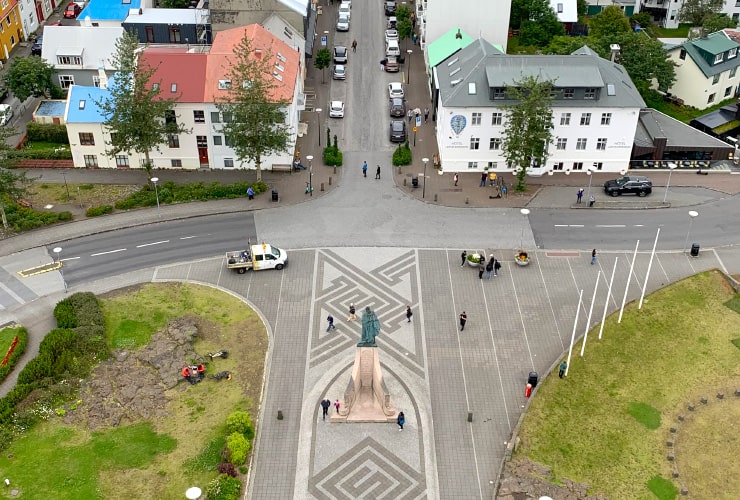
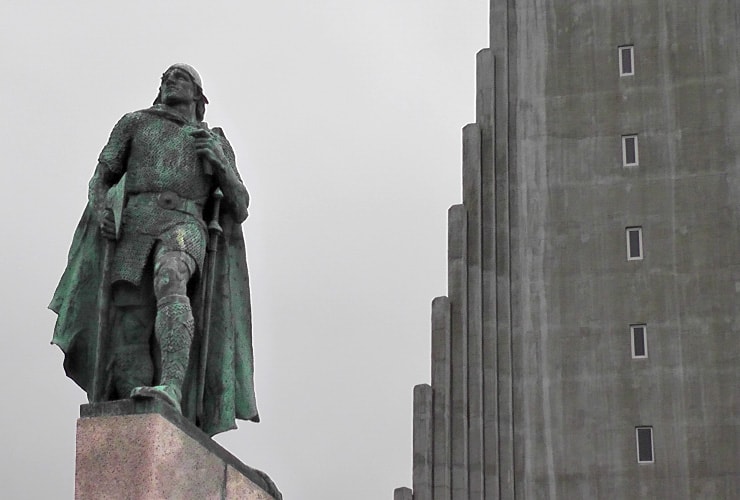
If you love history the statue of explorer Leifur Eiríksson, which sits upon the hilltop Skolavorduholt, is a special treat. The monument overlooks the north end of Skólavörðustígur street and rests in front of the Hallgrímskirkja church courtyard. The statue was actually designed by American sculptor Alexander Stirling Calder and presented, by America, to the Icelandic government in 1930 to commemorate the 1,000 year anniversary of Alþingi. To further the U.S. connection to Eiríksson, the States celebrate October 9 each year in honor of the adventurer and even had a 6¢ stamp created in 1968 with a depiction of the statue. It is widely accepted that Eiríksson discovered the Americas some 500 years before Columbus. The statue sat in its current location for 13 years before Hallgrímskirkja began construction.
Hallgrímur's Church
Pronounced: houch • gree • me • esh • coosh
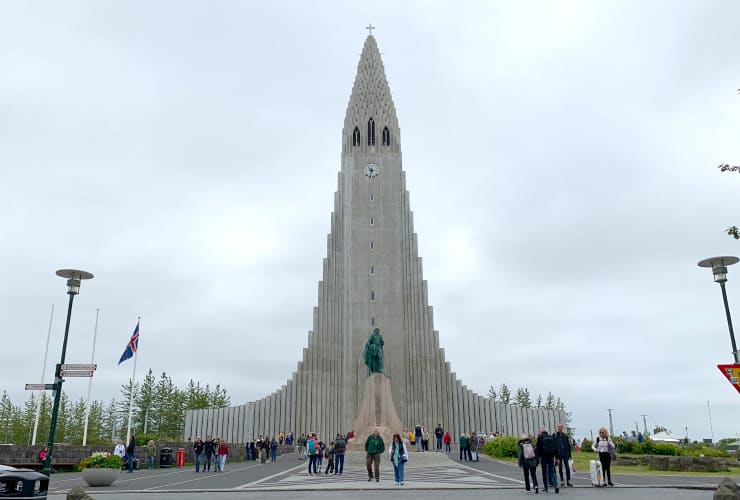
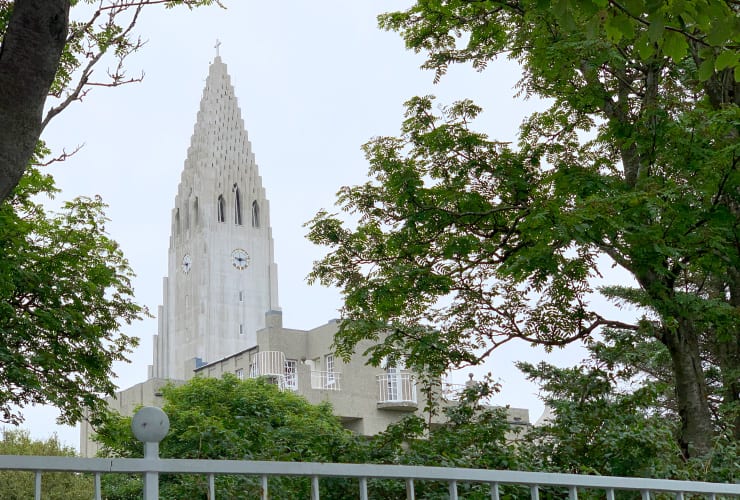
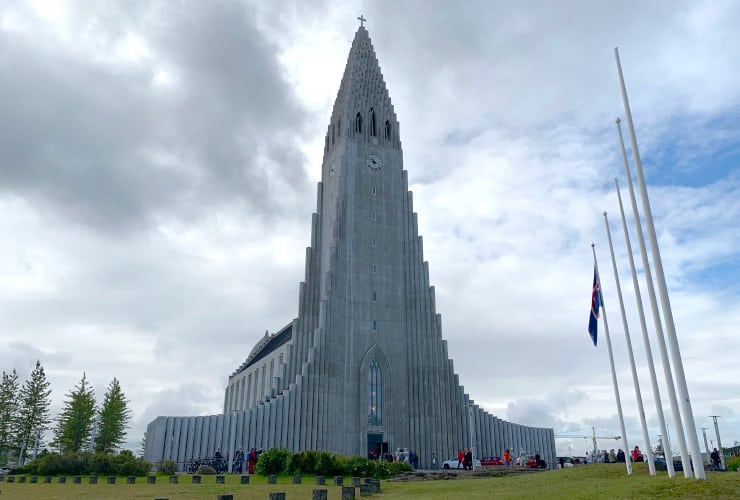
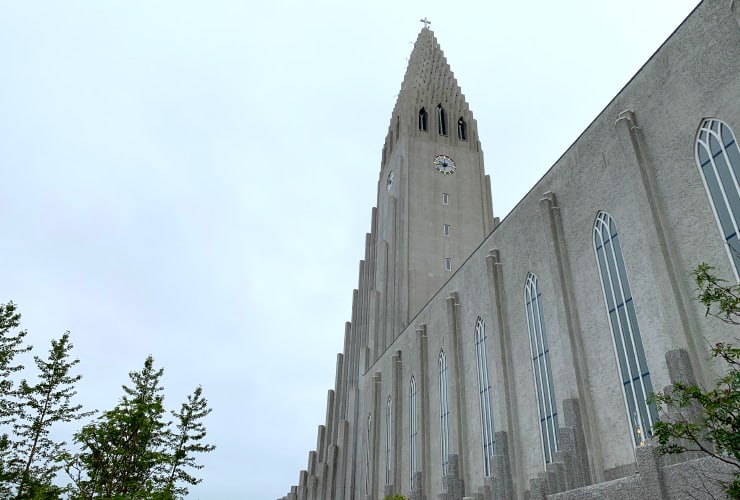
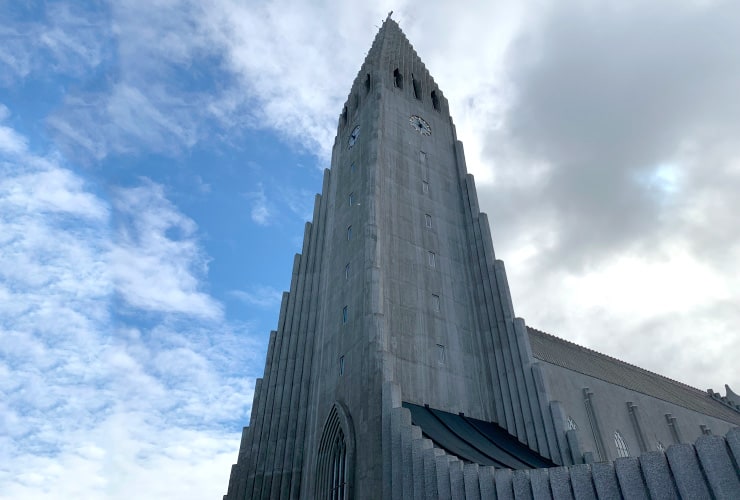
Most would agree that any list of the best places to visit in Reykjavik starts with the utterly unique Hallgrímur’s Church or simply Hallgrímskirkja. An acquired architectural taste, this landmark Lutheran place of worship is the most photographed structure in the country. Hallgrímskirkja measures 244’ (74.5 m) in height and can be seen from virtually any place in greater Reykjavik and as far away as 12 miles (19 km). Named after the Icelandic poet and hymn writer Reverend Hallgrímur Pétursson, the church opens its doors to the public for free from Noon -3p (Mo-Sa) and 10a-3p (Su) though there is a 1000 kr ($7-10) fee to ride the elevator to the top to get a 360° view of Reykjavik.
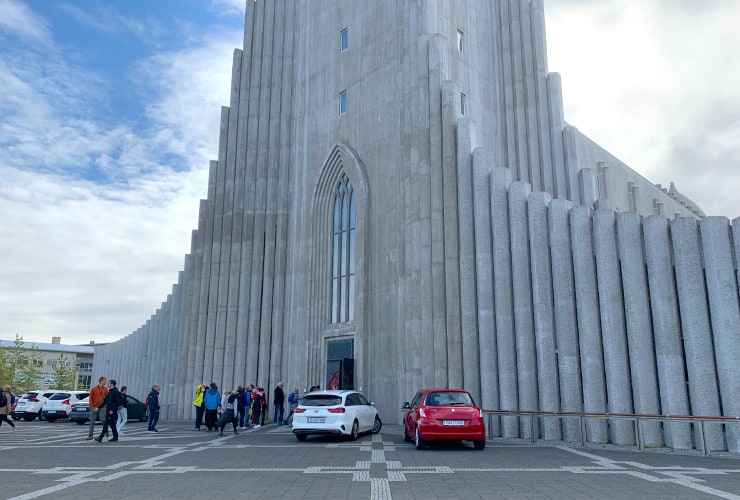
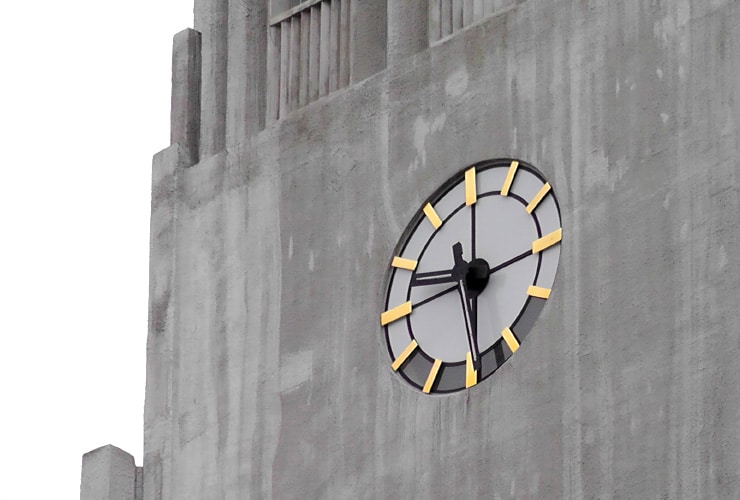
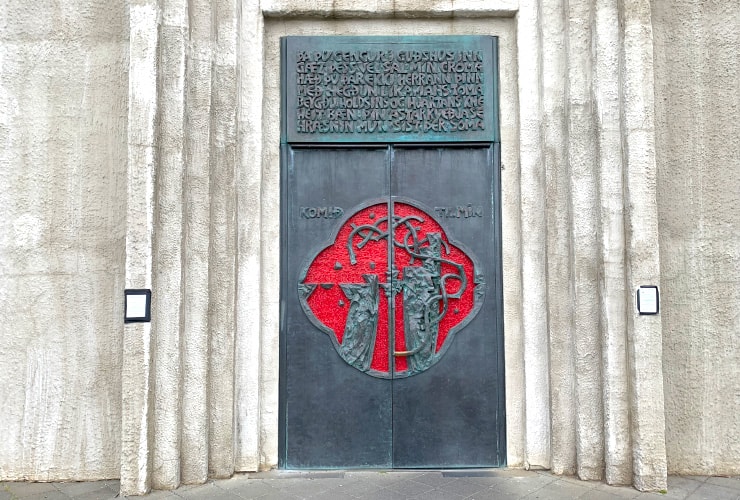
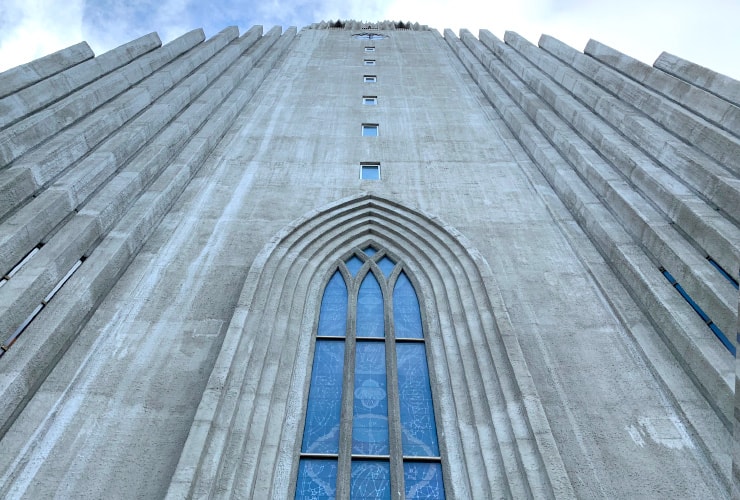
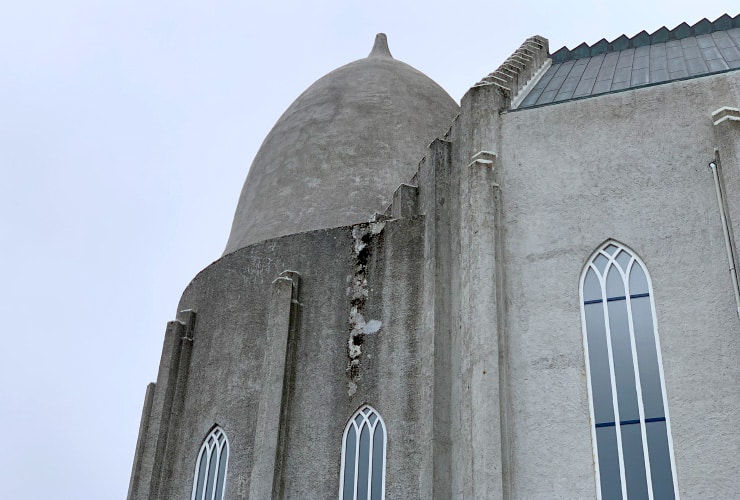
While the design of the exterior might be classified as Functionalism or a blend of different styles, it would be more accurate to call it uniquely Icelandic. The architect, Guðjón Samúelsson, wanted the exterior to be a reflection of Iceland’s mountains, glaciers and rocks with the vertical columns along the wings reminiscent of the basalt columns of Litlanesfoss or the Reynisfjara Black Sand Beach. In all, it took some 41 years to complete construction of Hallgrímskirkja. The tower was constructed first with the iconic wings and steeple finished in 1974 and the nave consecrated in 1986. The stunning two large bronze doors of the entrance provide the only color to the exterior. Above the doors is a verse from Pétursson’s “Hymns of the Passion”. The cylindrical tower at the back, rising above the far end of the nave, is said to be shaped like a Viking’s helmet.
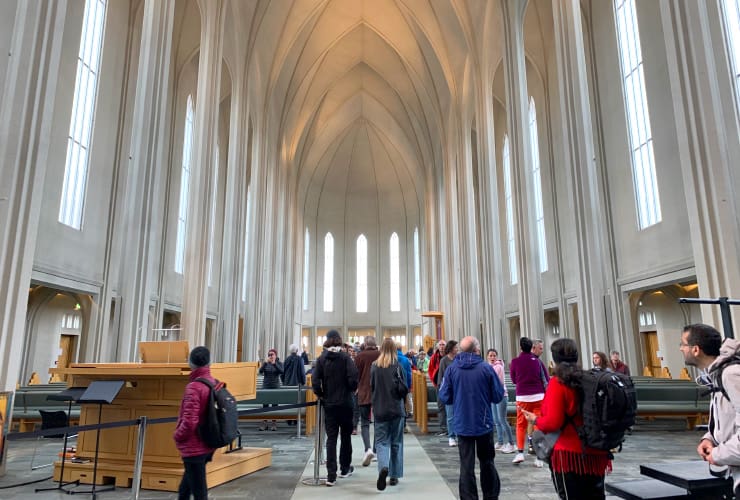
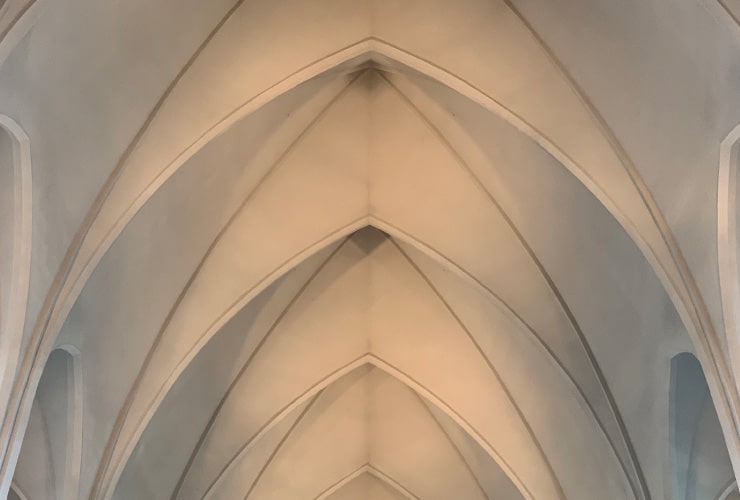
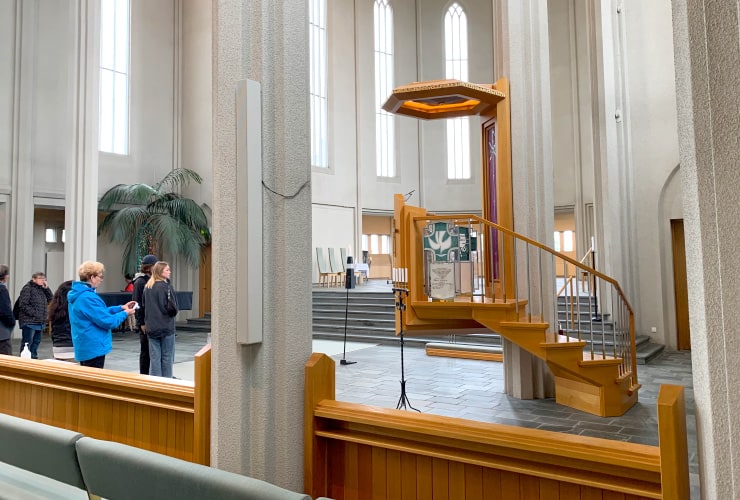
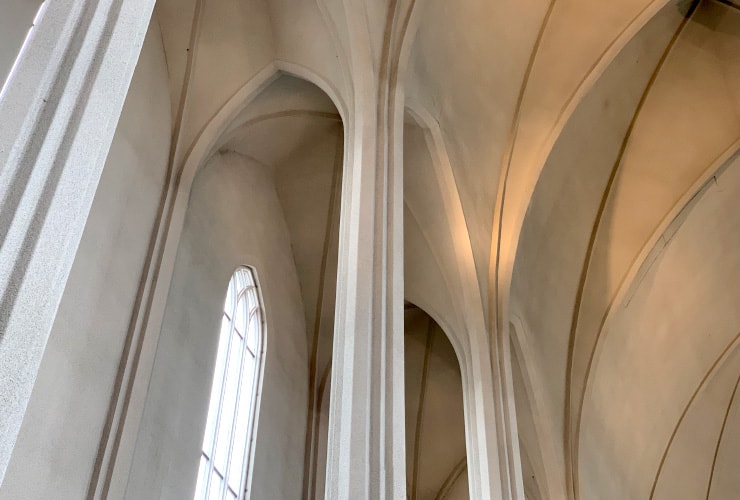
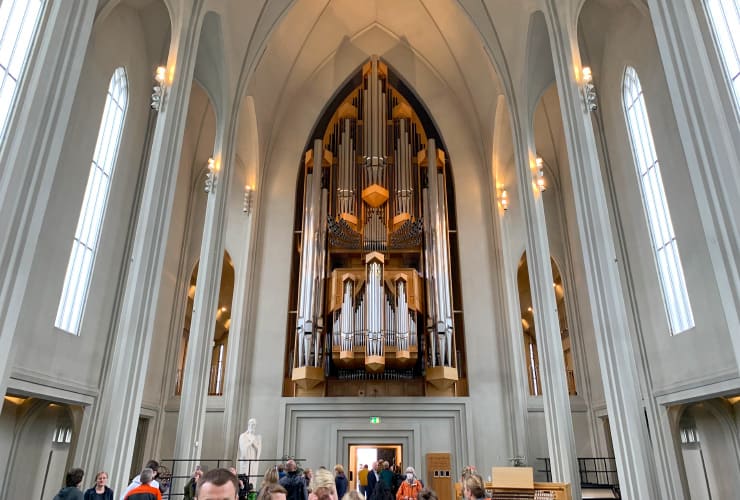
The inside of Hallgrímskirkja feels a bit more traditional with the large open spaces, high vaulted ceiling, rows of congregation pews and overall modernist minimalism. The interior measures 18,040 ft2 (1,676 m2) in size but doesn’t feel overwhelming. It is dominated by gray stone and the light wood of the nave paneling, pulpit and pew ends. There are a few interesting pieces of art but the dominant feature is the 49’ (15 m) tall pipe organ weighing in at 27.6 tons (25 metric tons). The organ has 5,275 pipes, 72 stops and 102 ranks. Just beyond the elevator is a small gift shop that, along with the lift, help the church remain entirely self-funded.
Skólavörðustígur
Pronounced: skole • la • relish • stee • woosh
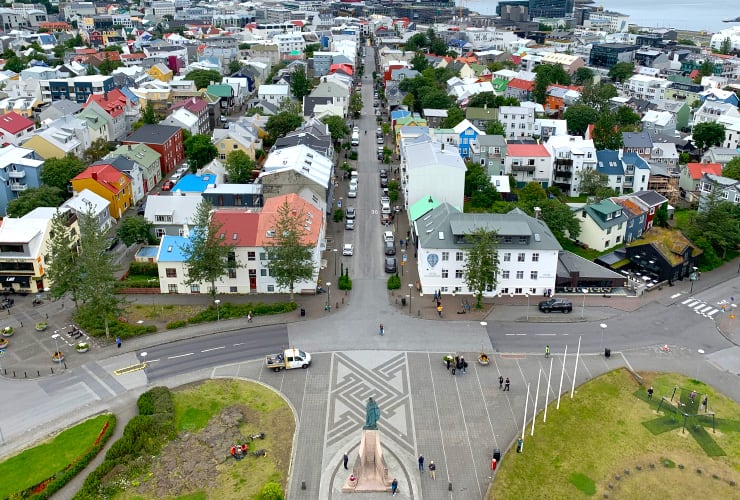
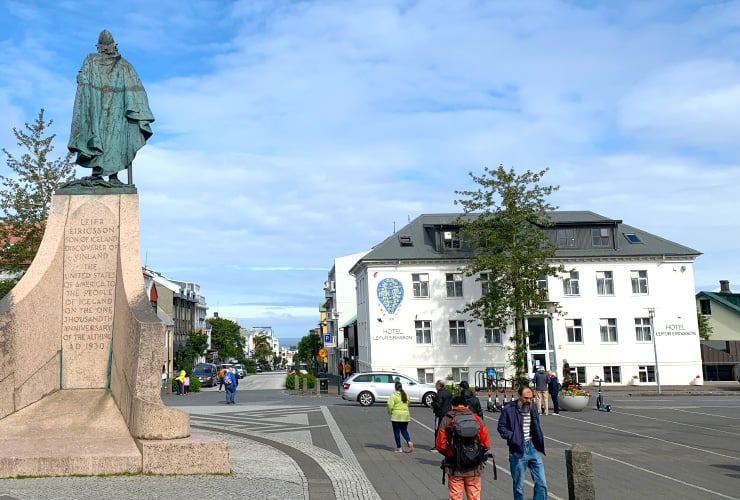
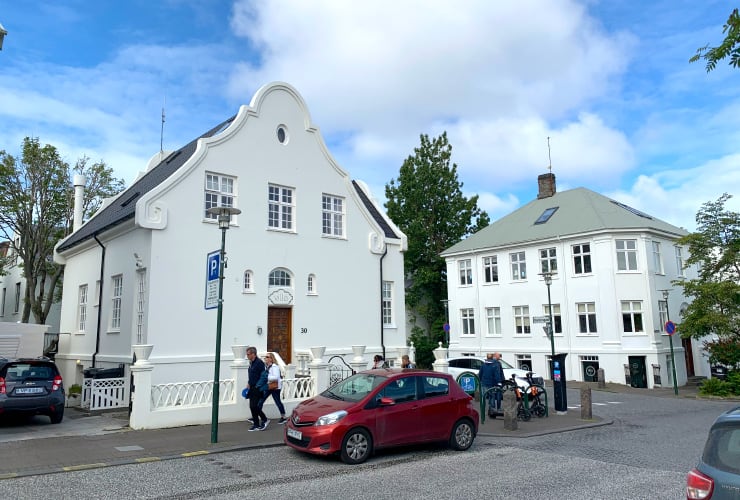
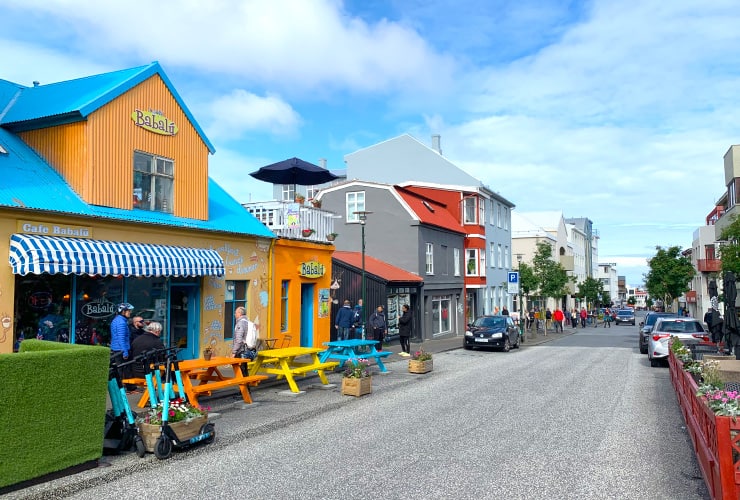
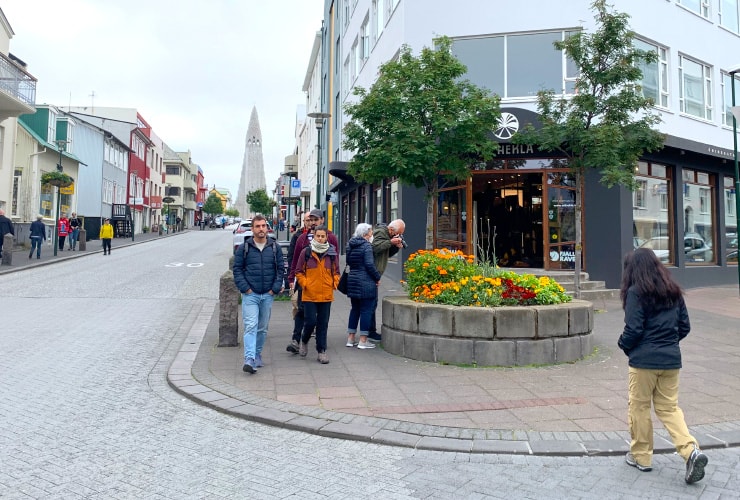
Skólavörðustígur is the main street that begins at the base of Hallgrímskirkja and Leifur Eiríksson’s statue. It is a favorite avenue for tourists and locals alike. You’ll find a wide variety of colorful buildings, fantastic murals, great shopping and plenty of fine dining options. Skólavörðustígur, meaning “school cairn’s hill”, was named for the school that once laid where the statue currently resides. Originally the street banned horses and was intended to be strictly a pedestrian way. This proved impractical as new home and business construction grew during the mid-19th century. Today you can find local landmarks like Café Babalú, Orr jeweler, Penninn Eymundsson Skólavörðustíg book store and 12 Tónar record store among the many professional buildings and apartments. As you continue down Skólavörðustígur be sure to turn around 180° to see Hallgrímskirkja rising high on Skolavorduholt.
Rainbow Street
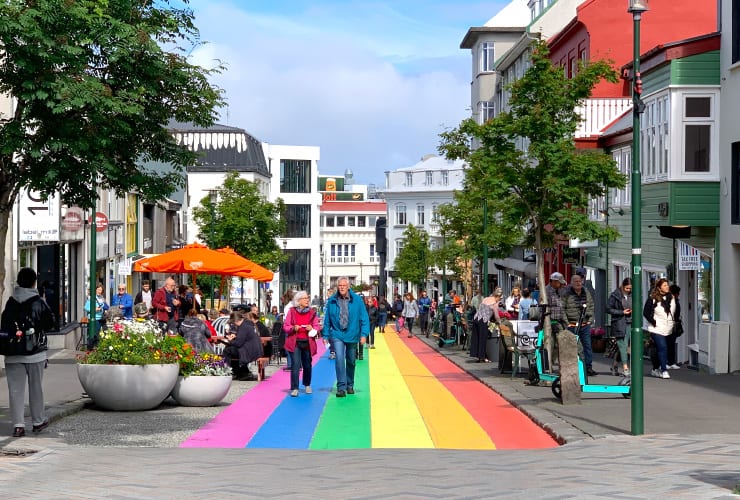
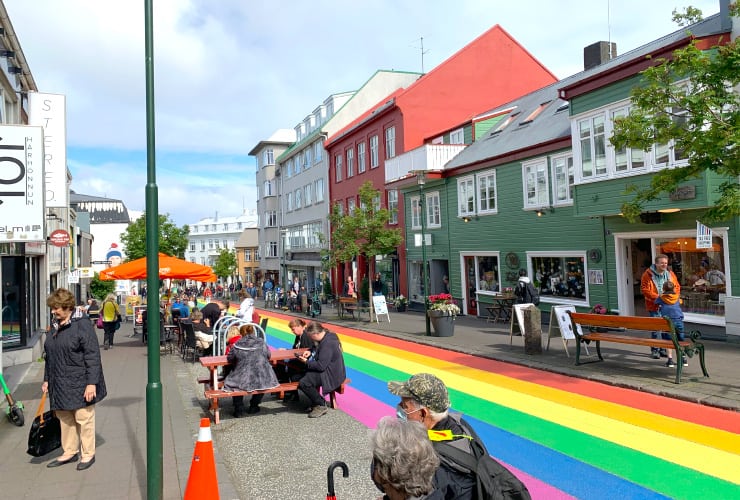
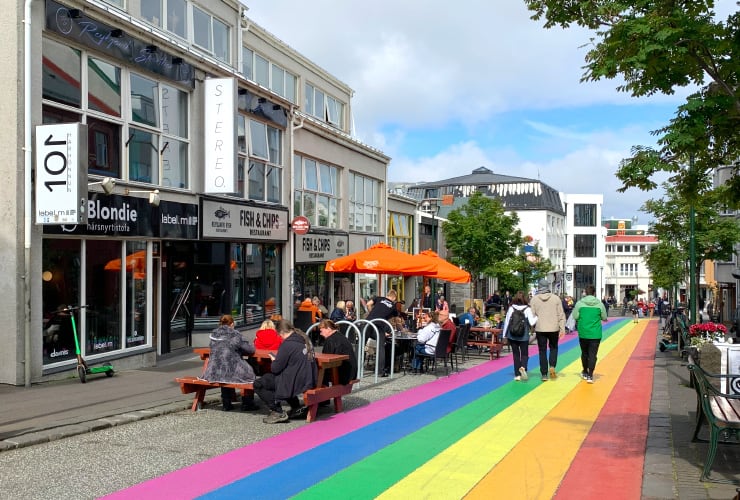
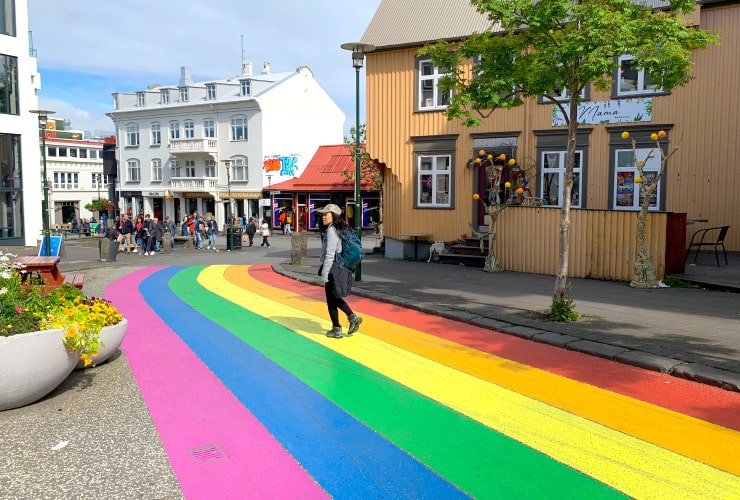
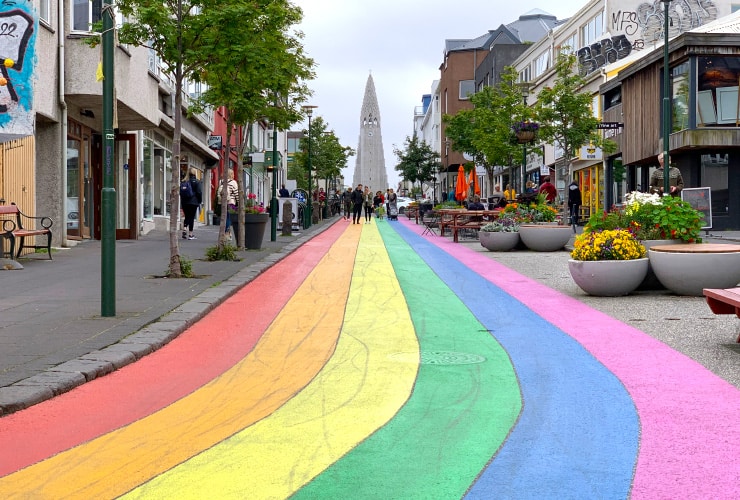
As you approach the cross street, Bergstaðastræti, you see the start (or end) of the infamous Rainbow Street, one of the best places to visit in Reykjavik. Upholding its reputation as one of the world’s most LGBTQ-friendly cities (and countries), Rainbow Street became a permanent fixture in 2019. The original street art initially appeared at the 1999 Reykjavik Pride event that attracted over 100,000 visitors. Rainbow Street also features curbside dining at Reykjavík Fish Restaurant and 101 Reykjavik Street Food, hair stylist Blondie Hársnyrtistofa and the Grasteinn-Gallery. Obviously, it is one of the more popular areas for pictures, especially looking back at Hallgrímskirkja up on the hill.
Ingólfur Arnarson Statue
Pronounced: ene • go • lar • nar • son
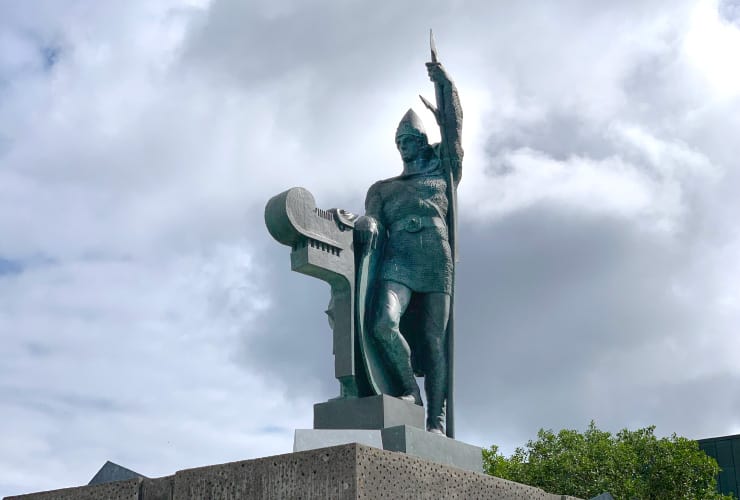
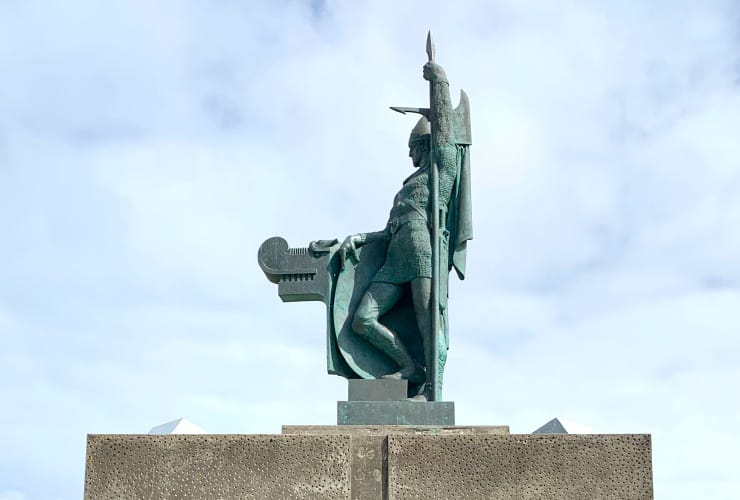
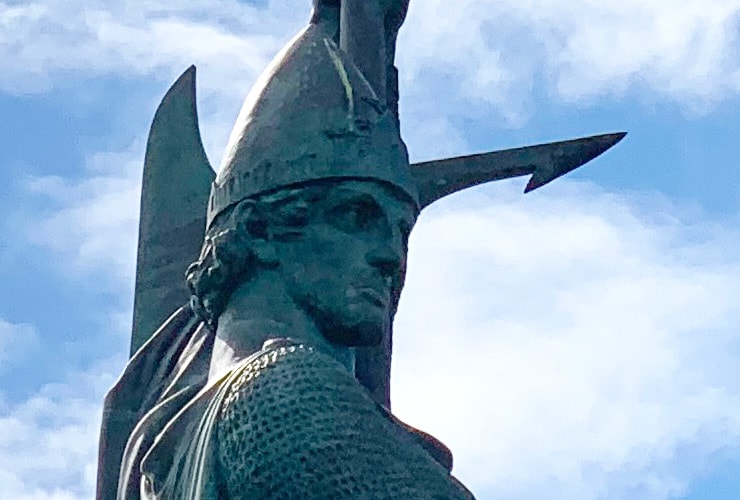
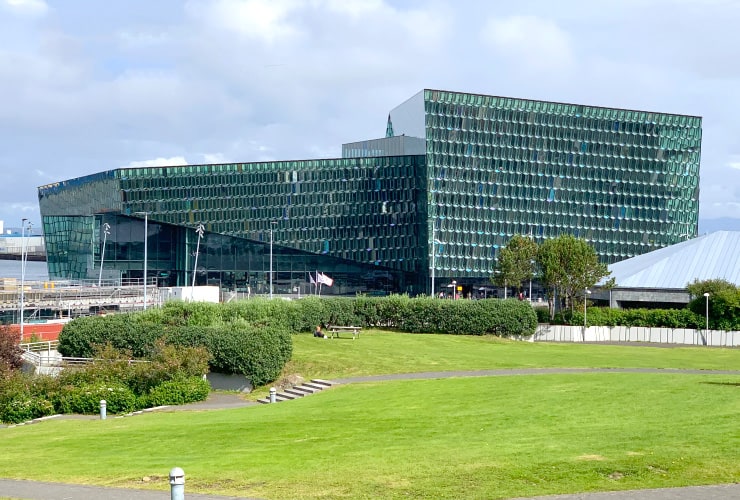
About 175 yards (69 m) northeast of the Prime Minister’s Office is a knoll called Arnarhóll. Atop that hill is a statue of one of the first permanent Norse settlers of Reykjavik, Ingólfur Arnarson. The monument, erected in 1924, commemorates one of the cities founding fathers who, at one time, owned a significant portion of southwestern Iceland. The Icelandic Book of Settlements states that he, along with his wife and foster brother, settled and named Reykjavik in 874. His son became a major chief and influential member of Alþingi. From the top of the knoll you have an excellent view of the Lækjartorg Public square, the Harpa Concert Hall and the harbor beyond. A statue in front of Höfði House also celebrates Arnarson.
Bæjarins Beztu Pylsur
Pronounced: I • are • in • spress • do • pre • shoosh
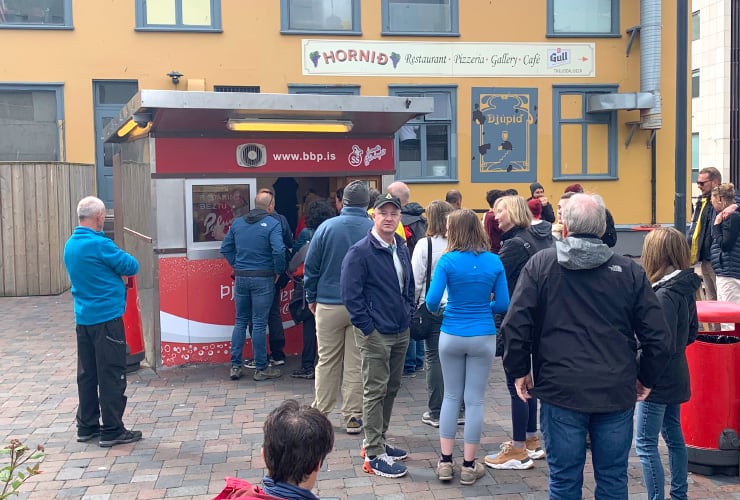
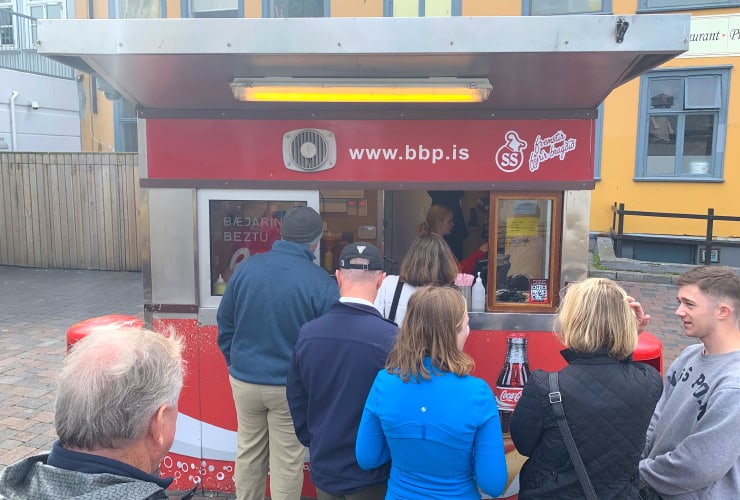
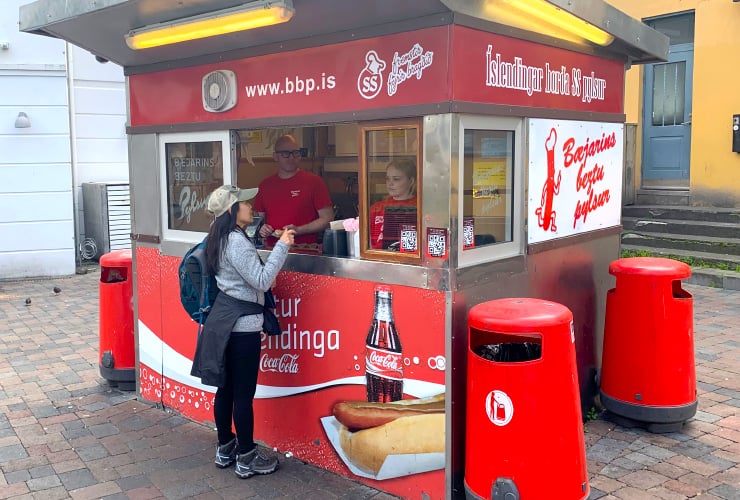
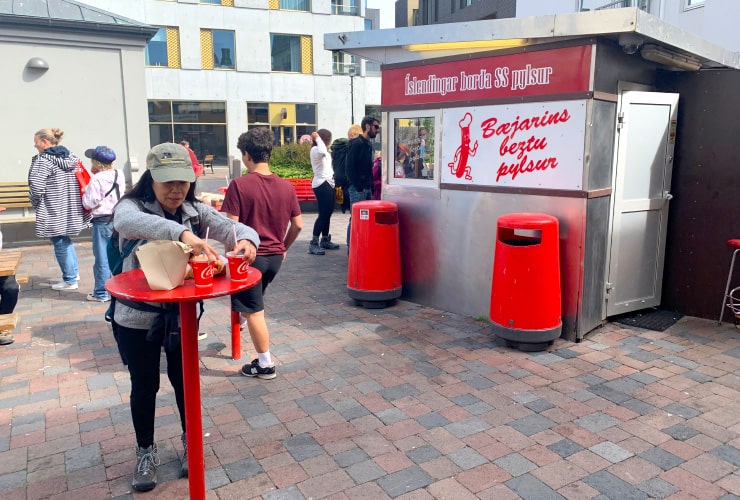
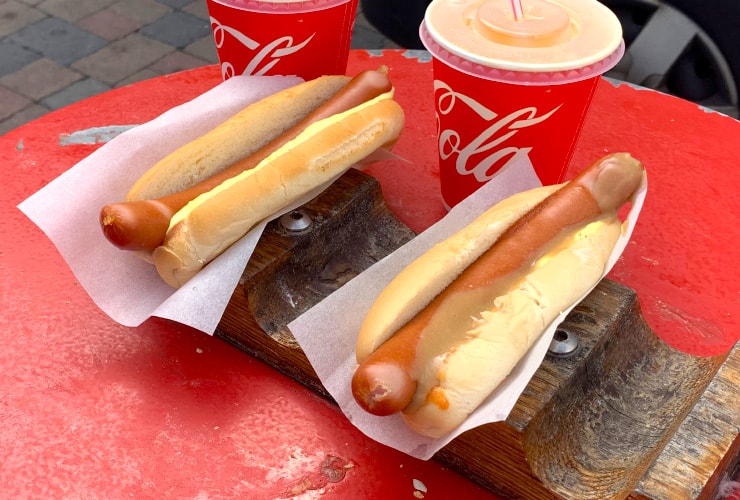
A few blocks from the Prime Minister’s Office are the best hot dogs to be found in the entire Land of Fire and Ice! Finding the Bæjarins Beztu Pylsur is easy . . . just follow the collection of folks lined up for a quick meal. Bæjarins Beztu, much like In-N-Out Burger in the States, has a very simple menu. They do one thing and they do it very well. Part of their distinction is their dogs are lamb-based with beef and pork. You can choose from some basic condiments including the standard ketchup and mustard as well as fried or raw onions and remoulade. The experience is well worth the slight detour and is a must on any list of the best places to visit in Reykjavik.
Church of Seltjarnarne
Pronounced: wid • hoo • selt • viat • nam
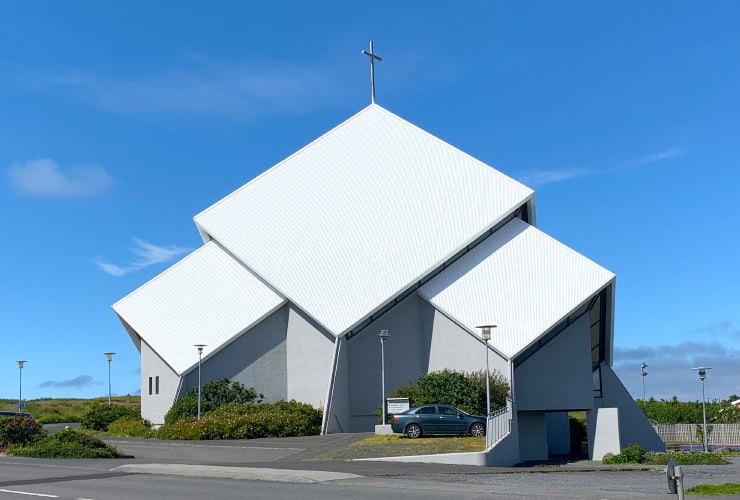
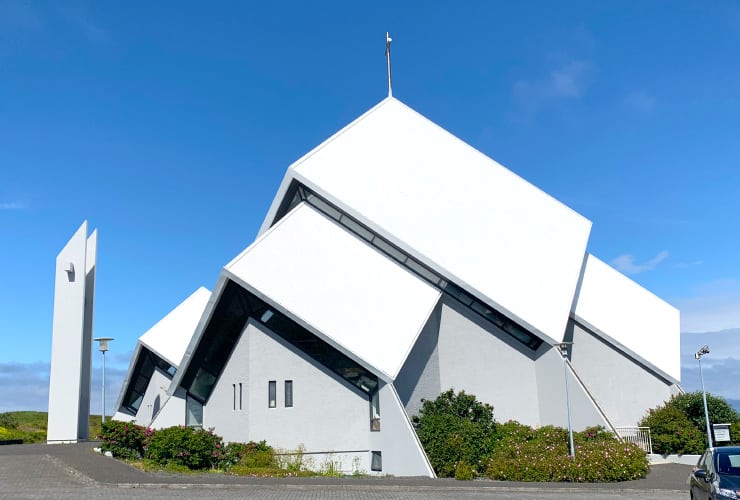
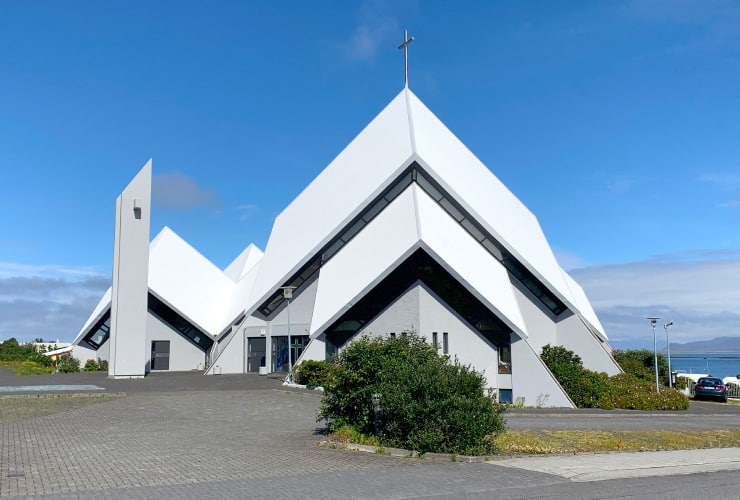
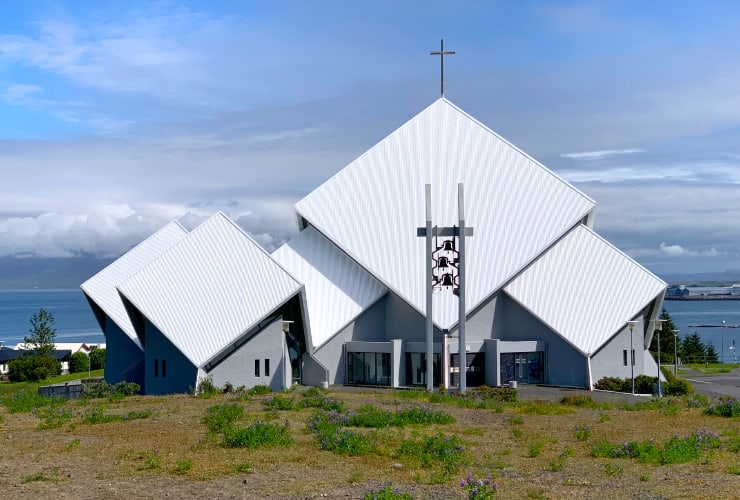
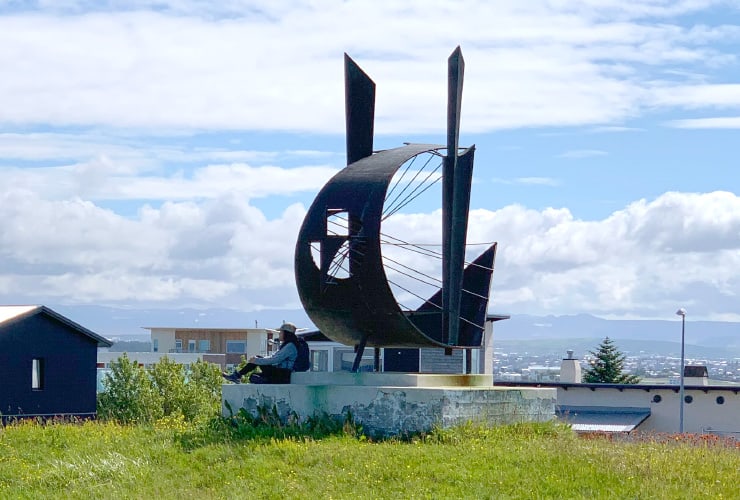
The utterly unique Church of Seltjarnarne, or Seltjarnarneskirkja, is technically in the town of Seltjarnarnes which is considered to be part of Greater Reykjavik. Overlooking the bay and sitting atop Valhúsahéð hill, this is an ideal spot to relax and enjoy the beautiful views of Reykjavik down below. The church, built in 1974, was designed by architects Hörður Björnsson and Hörður Harðarson in a distinctive Modernist style. Because of its unique roof shape and layered placement, Seltjarnarneskirkja takes on many different looks depending on your perspective. On top of Valhúsahéð is the fascinating Ásmundur Sveinsson sculpture, Trúarbrögðin, translated as “religion”.
Grótta Island Lighthouse
Pronounced: grow • ta • eas • lamb • plea • tows
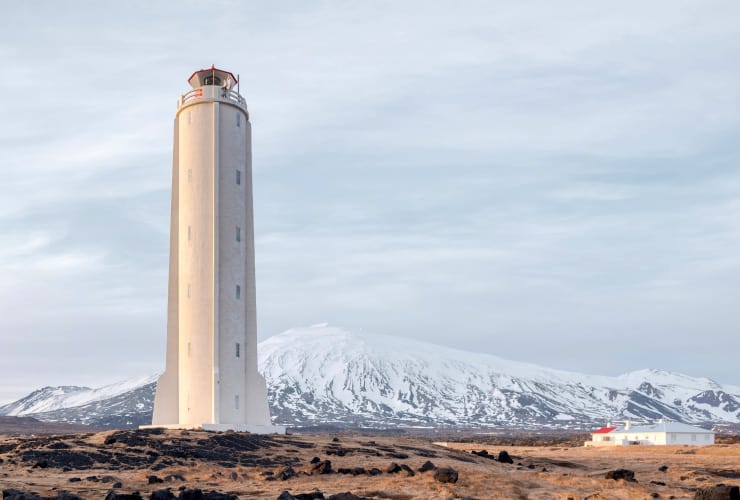
From Valhúsahéð you can also see the Grótta Island Lighthouse on the tip end of the Seltjarnarnes Peninsula. It sits at the northern most point of Greater Reykjavik in the town of Seltjarnarnes. It’s a bit out of the way but a nice companion visit along with Church of Seltjarnarne. Here’s a bit more about the Grótta Island Lighthouse.
Sculpture & Shore Walk
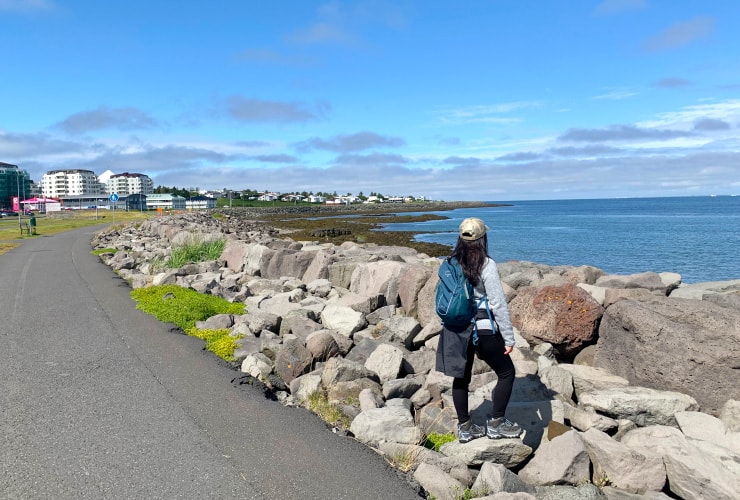
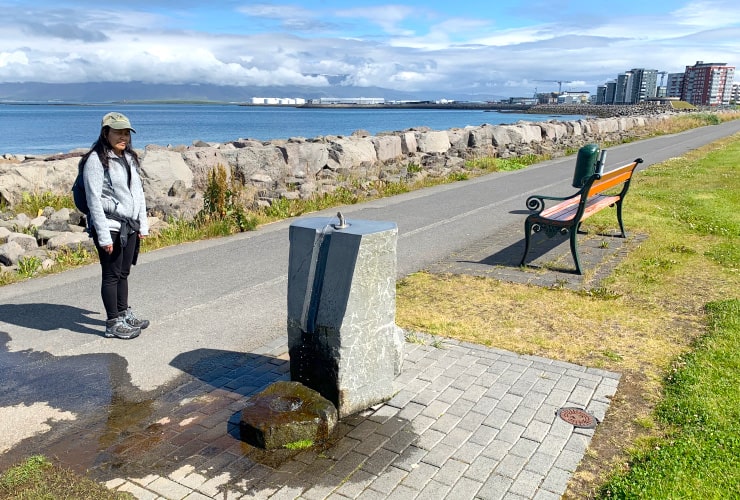
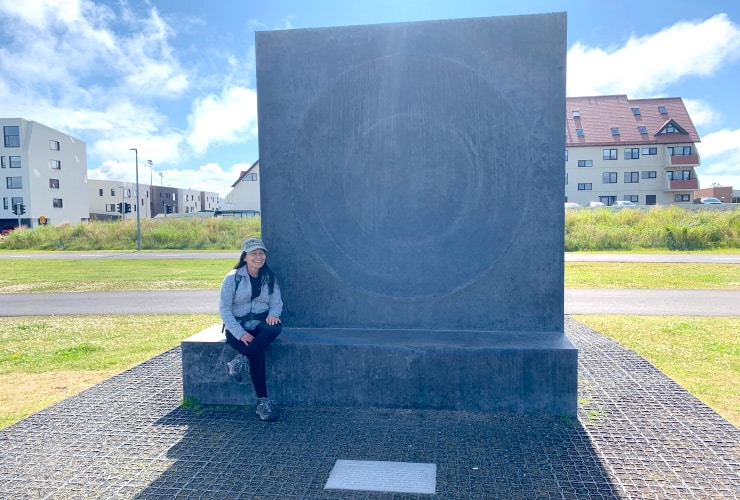
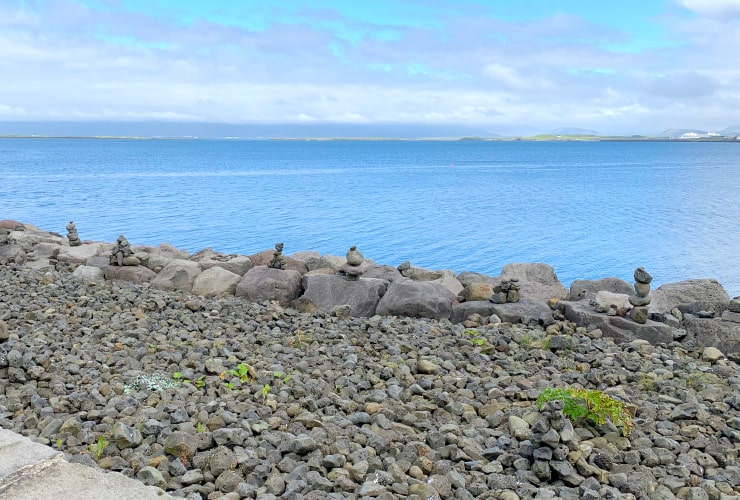
Along Reykjavik’s northern shoreline is the Sculpture & Shore Walk. In total this coastal walking path covers almost 6 miles (9.5 km) and takes you from the Grótta Island Lighthouse parking lot eastward all the way to the Skarfagarðs Lighthouse in Skarfabakki Harbor. The walk is essentially split in two by the Reykjavik City Harbor with the west section offering a nice view of the ocean and the isle of Akurey. There are a few pieces of professional art including a water fountain with a modern art take on a waterfall and a stone monolith bench
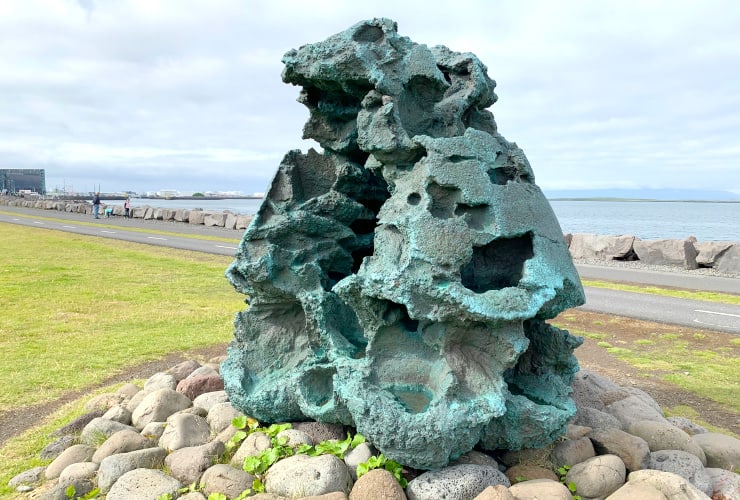
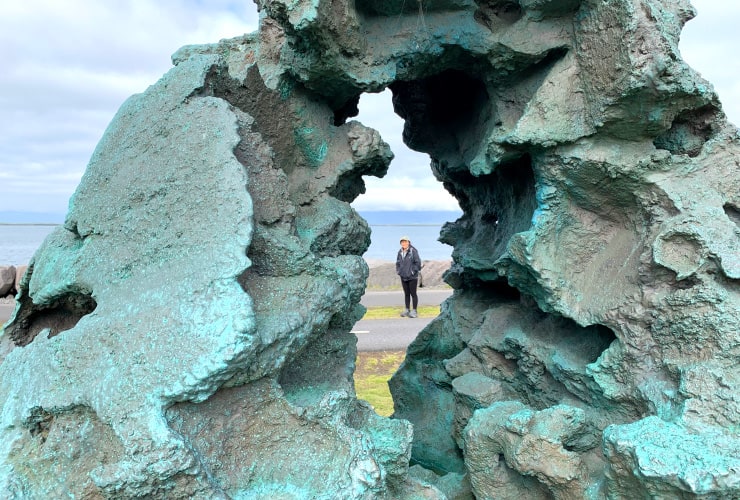
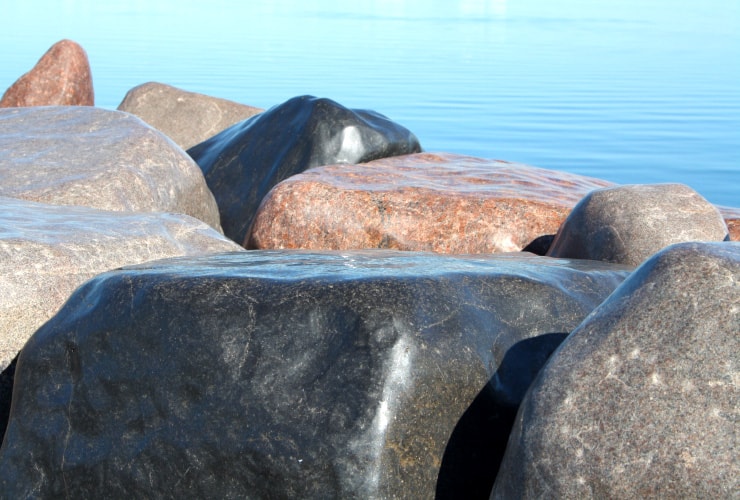
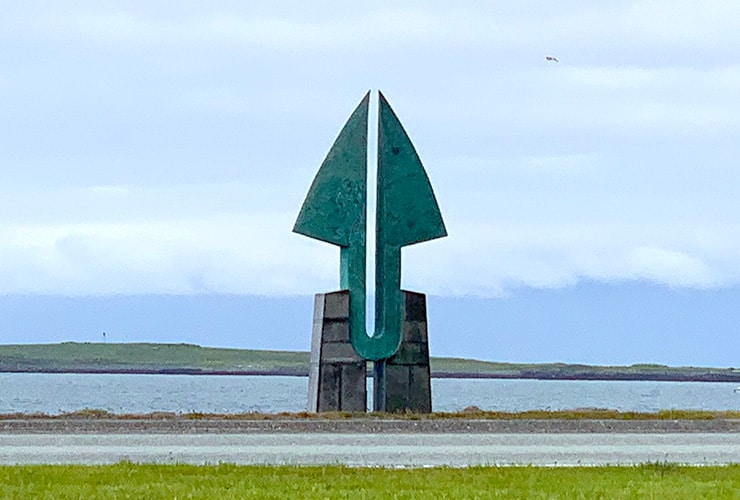
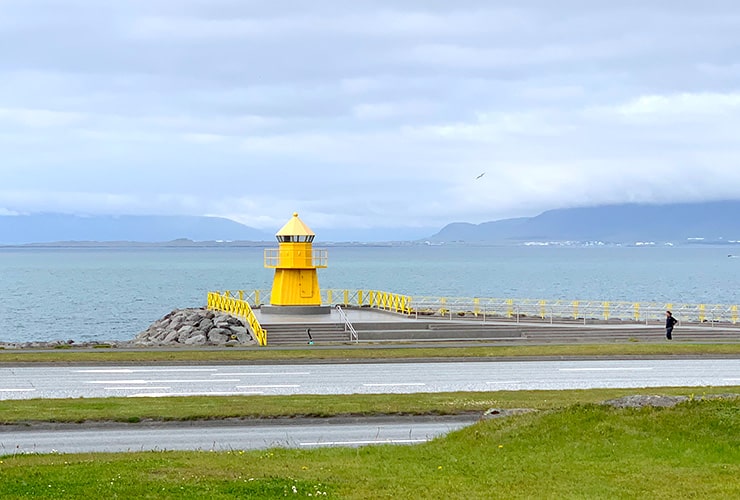
The east section offers similar views including Engey Island plus a number of sculptures. The first sculpture is the infamous Sun Voyager, a favorite picture spot and simply one of the best places to visit in Reykjavik. Next is The Cairn, a bronze lava rock abstract by Reykjavik native Jóhann Eyfells. At the intersection of Snorrabraut and Sæbraut, in the breakwater (and very easy to miss) is Sigurður Guðmundsson’s unmarked Shore Piece. It’s a series of finely polished rocks that really shine on sunny days followed with Partnership, by sculptor Pétur Bjarnason, which celebrates the diplomatic relations between the US and Iceland. Finally, there is the Höfði Lighthouse which has two twins across the bay to the west.
Þúfa
Pronounced: thoo • fa
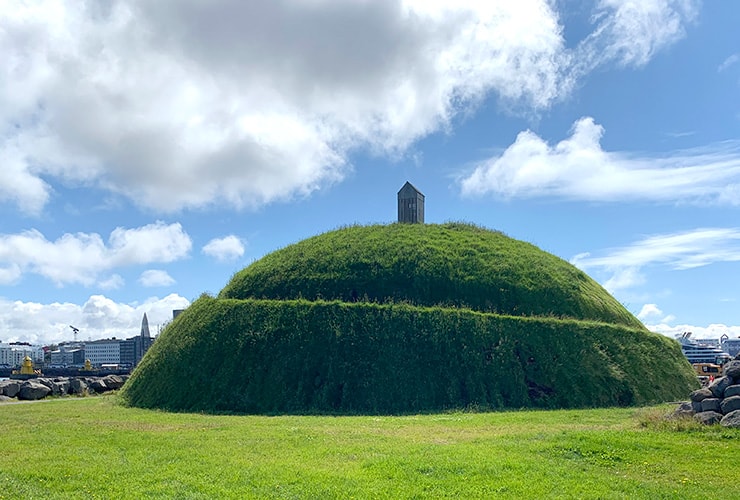
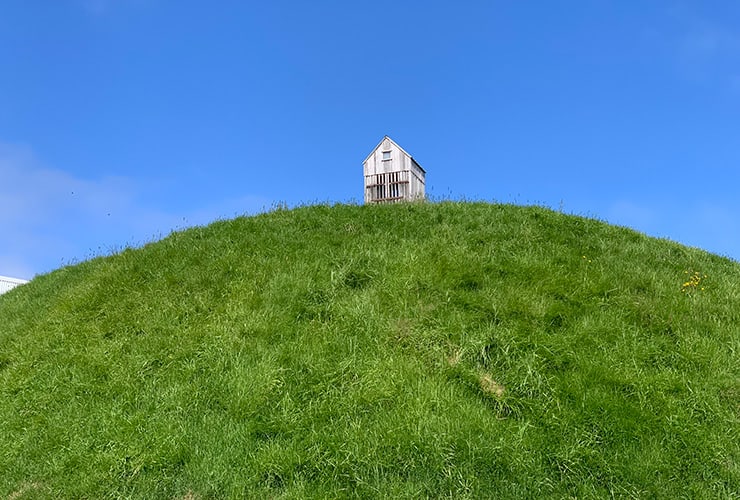
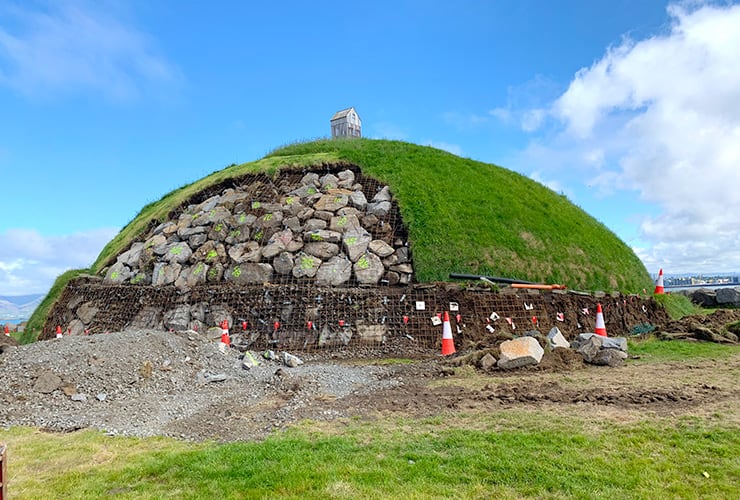
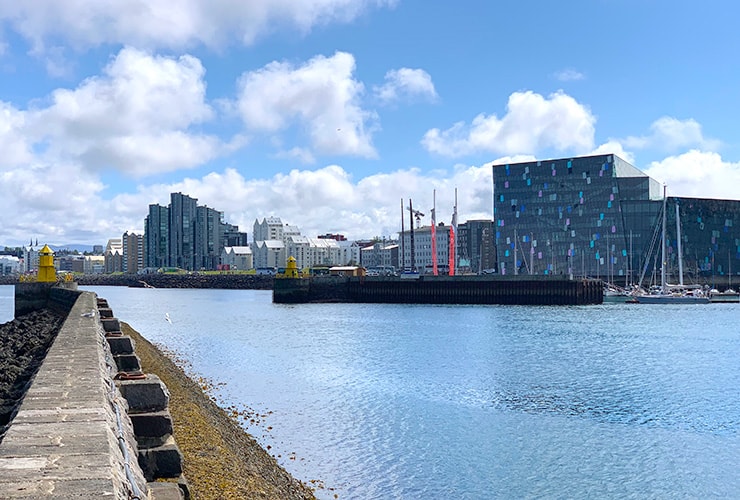
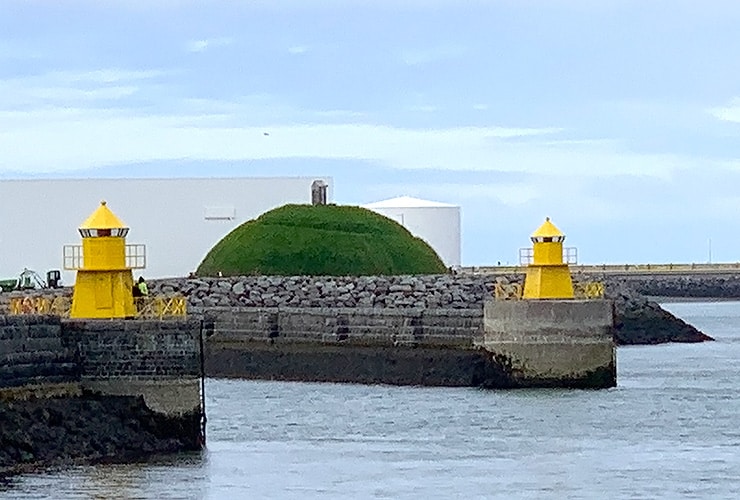
Sitting at the tip of Reykjavik Harbor, Þúfa is an artistic gem and one of the best places to visit in Reykjavik. It is a wonderful blend of nature, art and cultural awareness. Þúfa, created in 2013 by the Icelandic artist Ólöf Nordal, stands 26.2’ (8 m) in height and 85’ (26 m) in width. The grassy mound, or hillock, was constructed using 4,500 tons (4,082 mt) of gravel held by large rocks and rebar grids. There is a path that winds around the edges that leads to the top. Unfortunately for our visit they were repairing the base and we couldn’t ascend. On the top is an old fishing shed filled with harðfiskur (dried fish) as a tribute to the role that fisheries have played in the city’s history. The view of Harpa Hall, Old Harbor and Faxa Bay from the top of Þúfa is spectacular.
Saga Museum
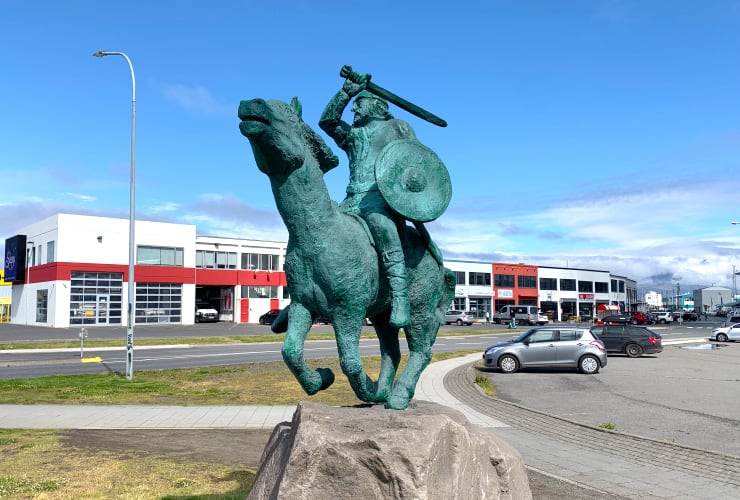
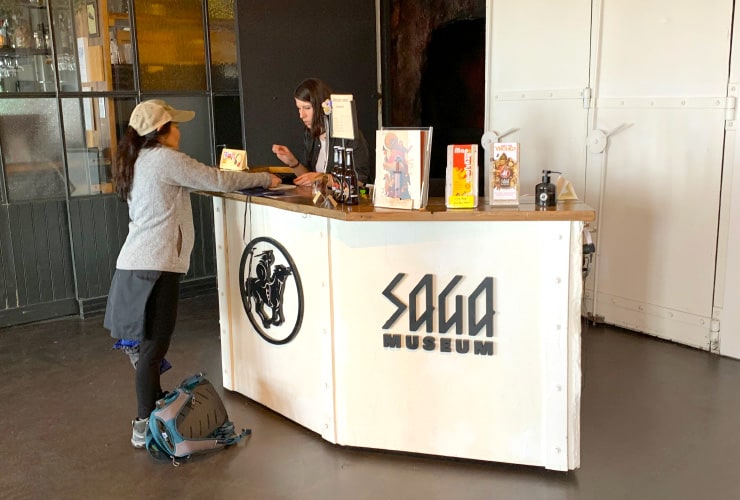
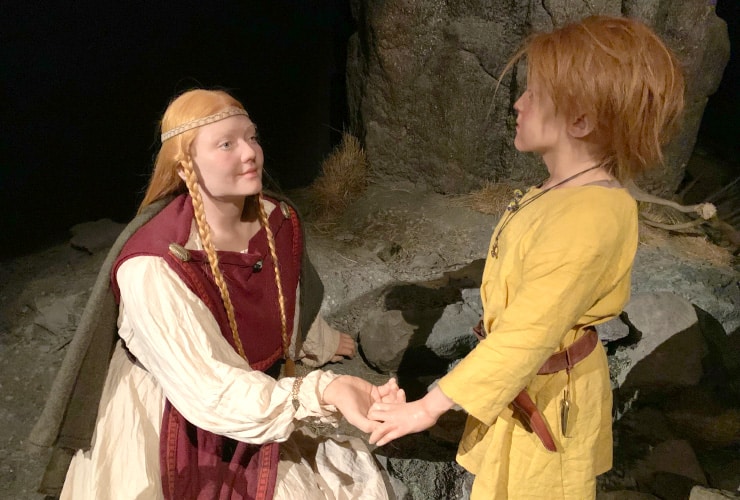
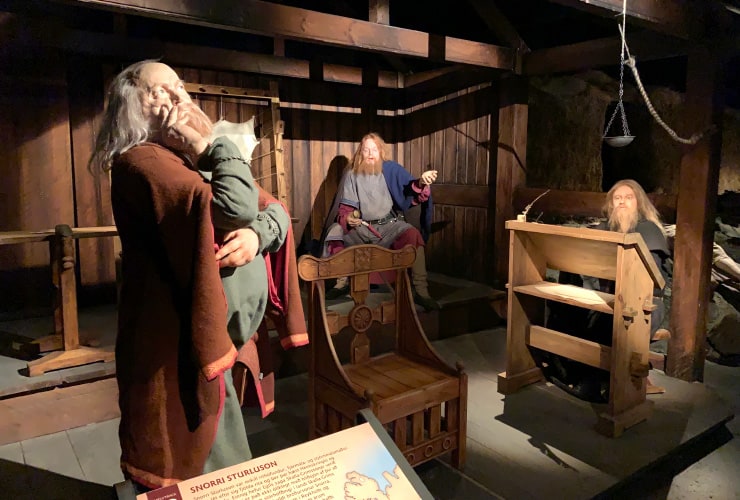
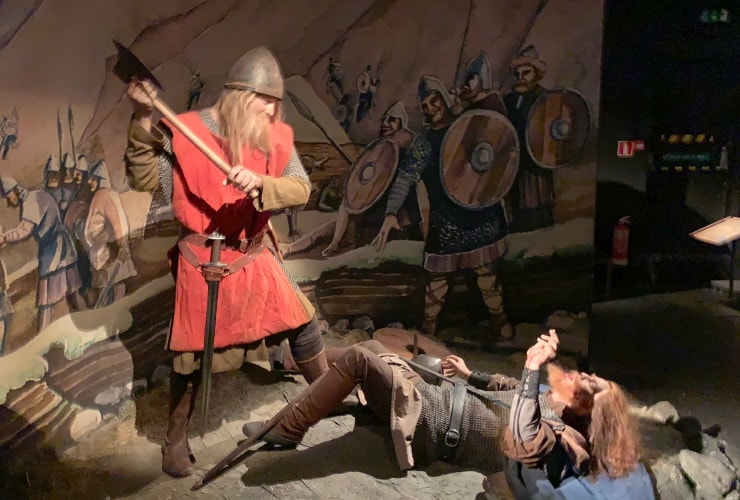
If you only go to one museum in Reykjavik, make it the Saga Museum. They have cleverly created almost 20 different scenarios, expressed through lifelike wax figures, that trace key moments in early Icelandic history from Floki and Ingólfur Arnarson to the Reformation of the 16th century. With your ticket (3000 kr/$23) you’ll receive a headset that guides you, in chronological order, through the entire exhibit. Be aware that some of the scenes are quite graphic and bloody including some torture and a beheading. If you love history, and excellent wax figurines, the Saga Museum will be one of the best places to visit in Reykjavik for you and your family.
Harpa Concert Hall
Pronounced: hahsh • pa • see • rum • sesh • poush
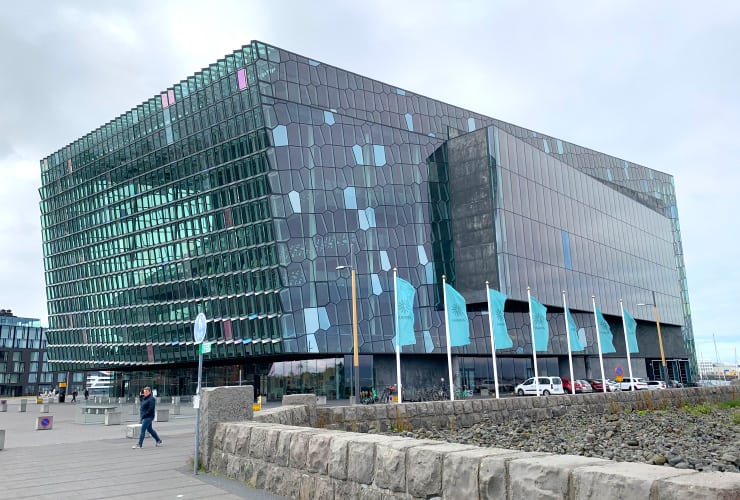
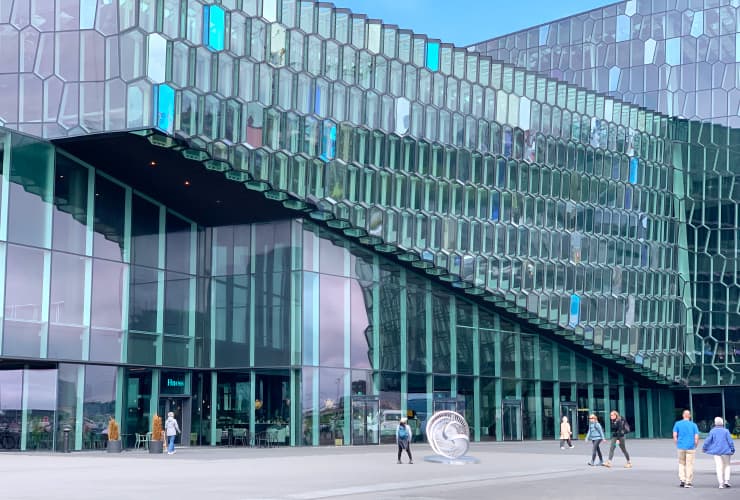
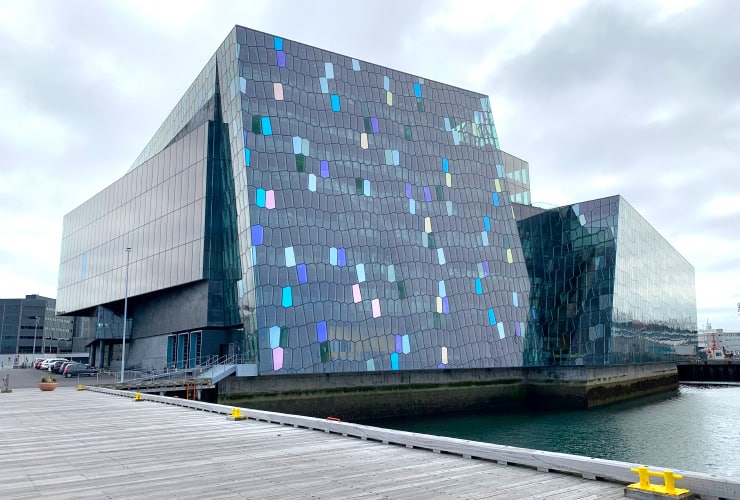
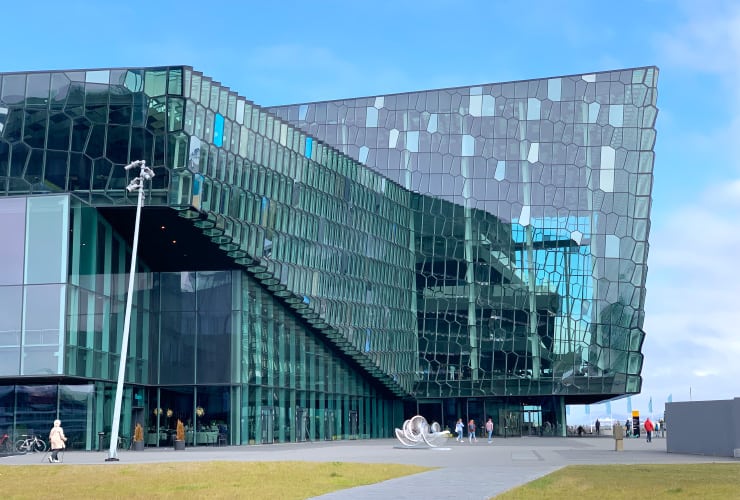
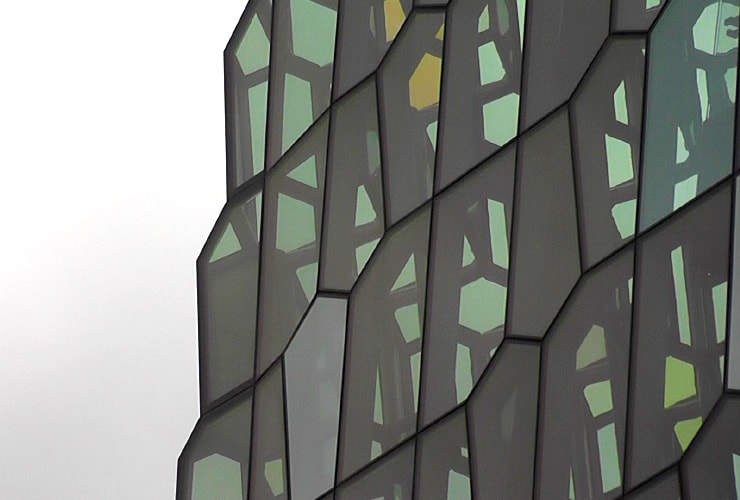
Harpa is a significant architectural landmark and among the best places to visit in Reykjavik. The winner of multiple awards, including the coveted Mies van der Rohe European Union Prize for Contemporary Architecture Award, Harpa is also considered one of the finest concert halls in all of Europe. It is home for the Icelandic Opera, the Iceland Symphony Orchestra and the Múlinn Jazz club. In 2016 Harpa was even picked as the Best Conference Center in Europe by Business Destination magazine in 2016. For all that the best reason to visit is to marvel at the 714 glass panels, each with unique shapes, which are see-thru with built in LED lighting. The shapes of the side windows are meant to reflect the basalt landscapes so common in Iceland.
Sun Voyager
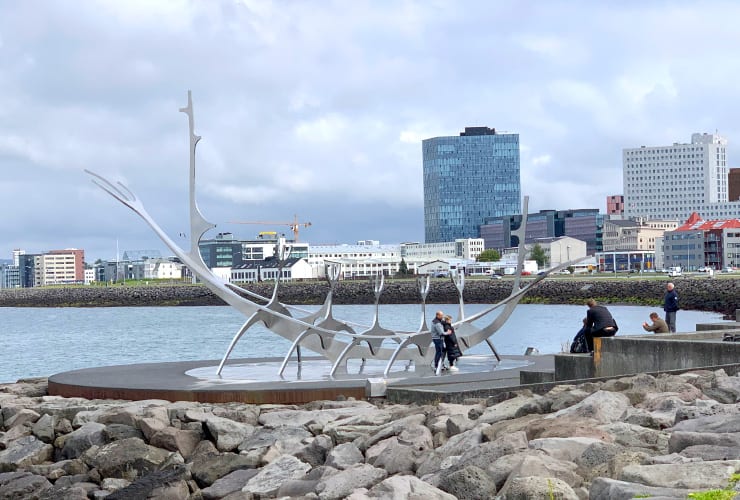
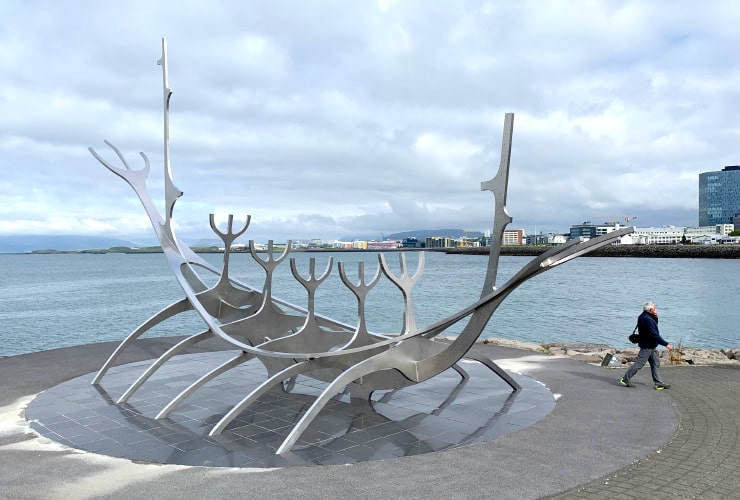
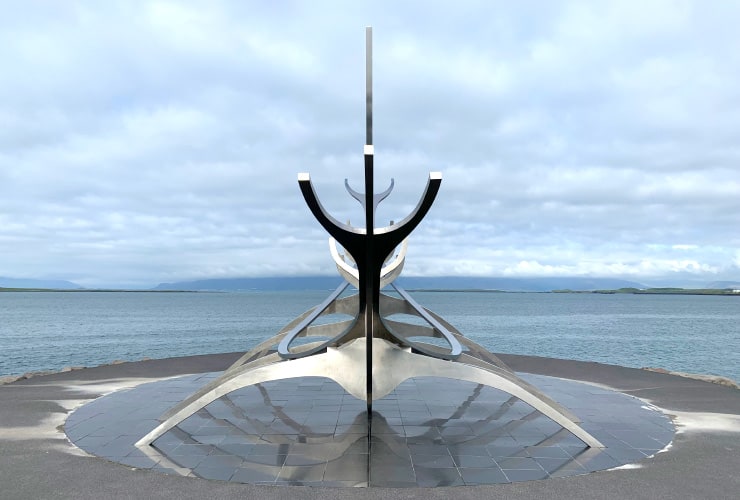
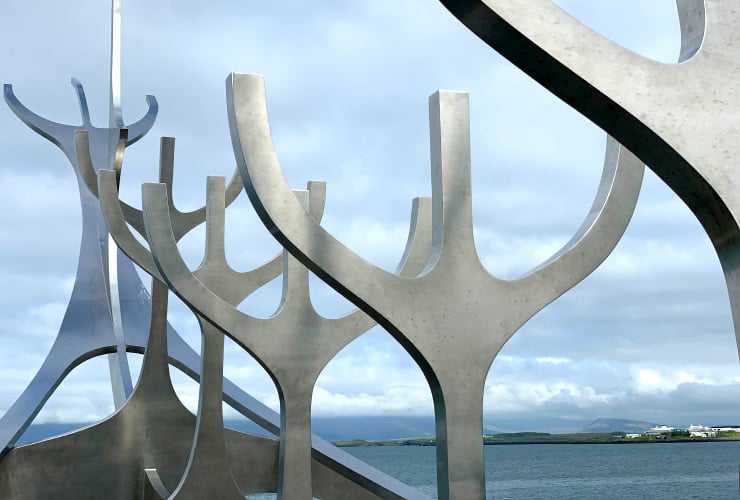
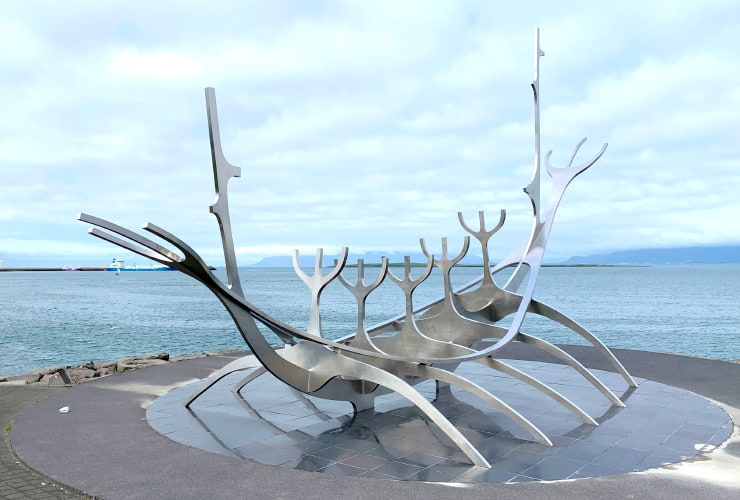
Another of the most photographed attractions, and high on anyone’s list of best places to visit in Reykjavik, is the beautiful Sun Voyager. Most tourists assume Sun Voyager is meant to be a viking vessel. Conceived by Jon Gunnar Arnarson in 1989 and erected a year later just after his untimely death, it was actually the artist’s symbolic ode to the promise of a future filled with the hope, progress and freedom. Sun Voyager is the vessel in which this journey would unfold. The work is made of stainless steel and measures 23’ (7 m) in width, 29½’ (9 m) in height and 59’ (18 m) in length. A truly iconic piece of art . . .
Höfði House
Pronounced: haly • hoosh
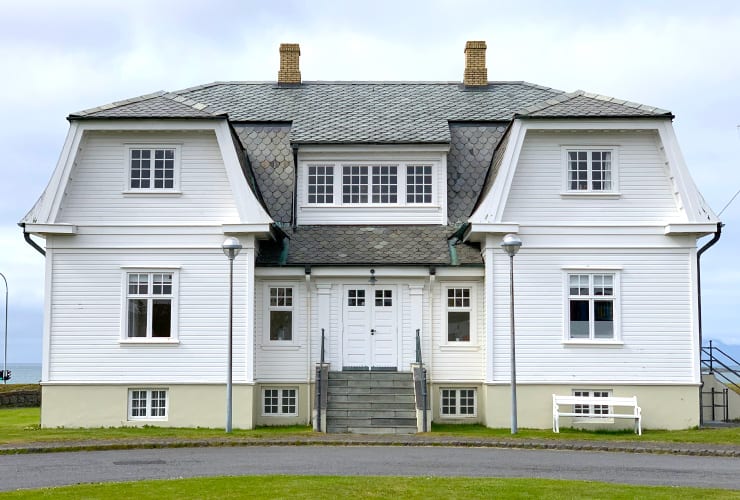
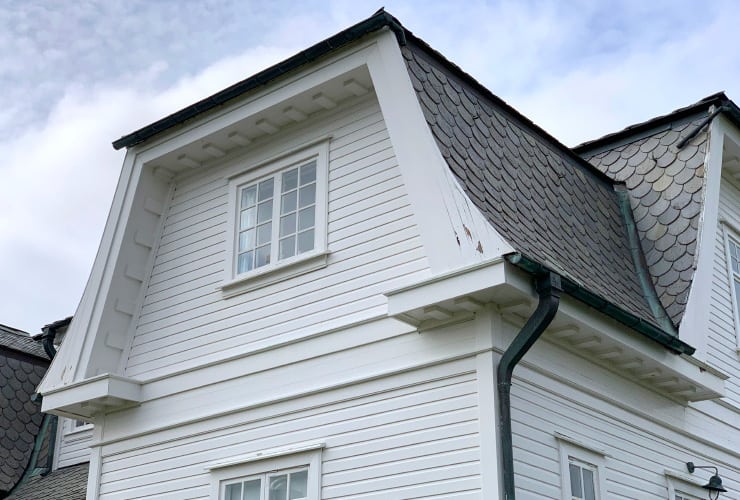
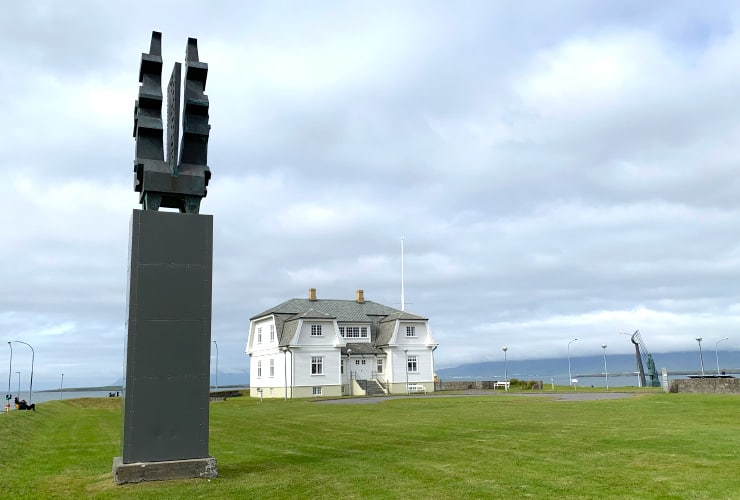
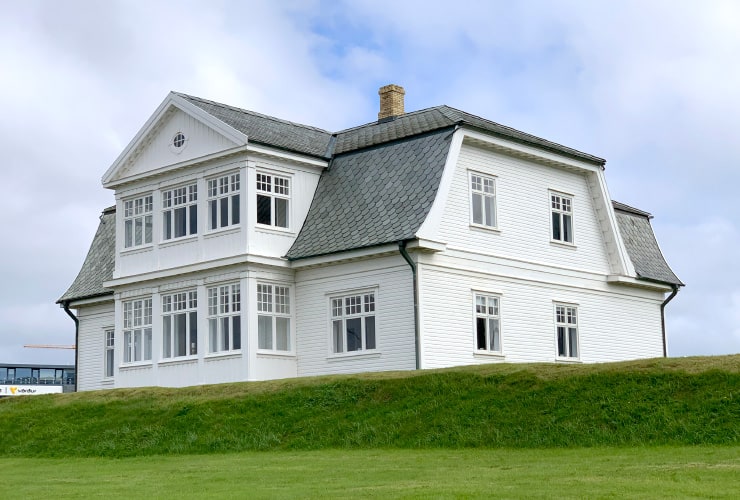

The historically significant Höfði House, overlooking Faxaflói Bay, was imported in 1909 from Norway by the existing French consul. It amounted to a “catalog home” but is beautiful nonetheless. Its place in history was cemented when it played host to the 1986 summit between US President Ronald Reagan and Russian General Secretary Mikhail Gorbachev that is credited as the breakthrough meeting leading to the INF Treaty signed the following year. Other notable visitations of note include Winston Churchill, Marlene Dietrich and Queen Elizabeth II. The grounds also have two sculptures of note. One is an abstract piece commemorating Reykjavik founder Ingólfur Arnarson and the other to longtime resident poet and entrepreneur, and beloved Icelander, Einar Benediktsson.
Borg29 mathöll
Pronounced: borg • fiftoo • oknee • emark • tetch
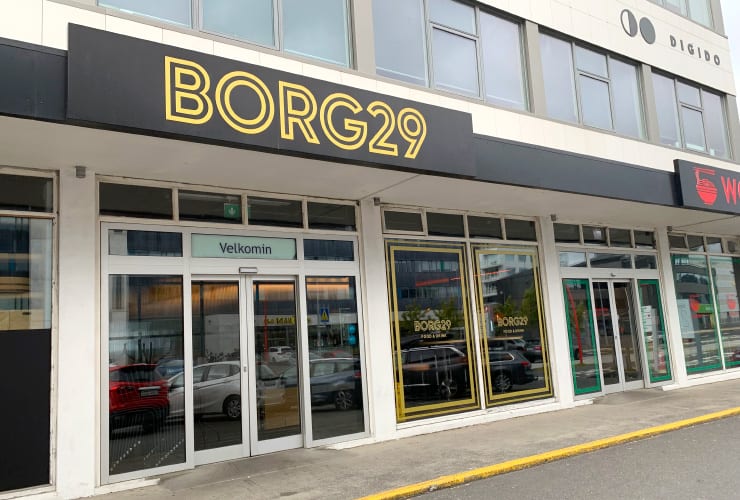
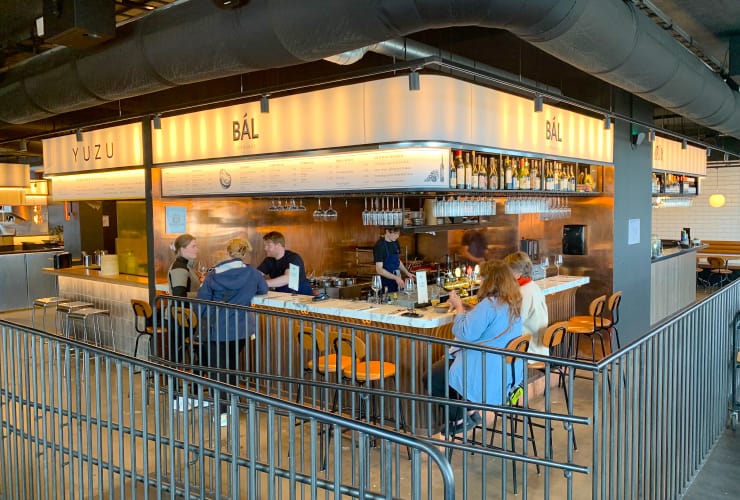
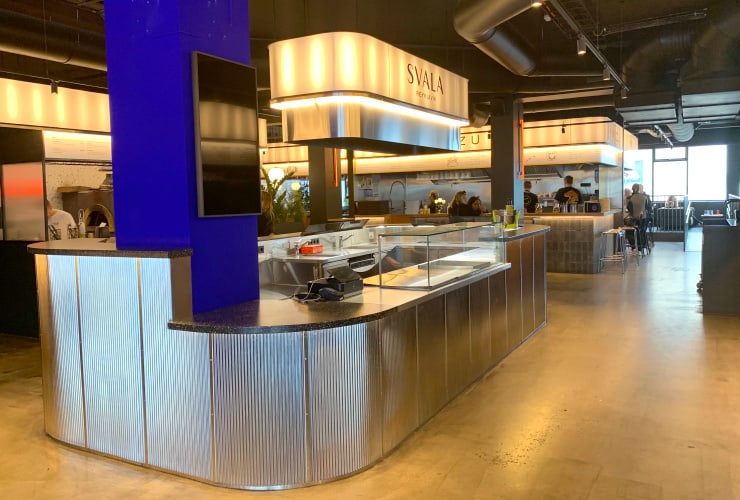
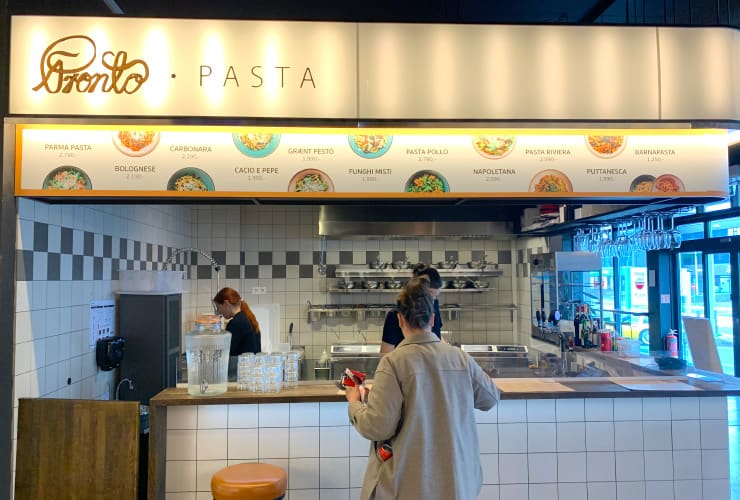

Our first night in Reykjavik we discovered a fantastic food court, Borg29 mathöll in the Borgartún district, just blocks from Höfði House. It features (8) different restaurants and plenty of shared areas for sit down dining. We fell in love with Pronto Pasta and their Italian pasta dishes Grænt Pestó and Napoletana. The other establishments included a Sushi bar, salads and pitas, Napoletana pizza, burgers and the Asian-inspired WOK ON. The shared eating areas are spacious, kept clean by staff and make for a wonderful dining experience.
Grand Hotel Reykjavik
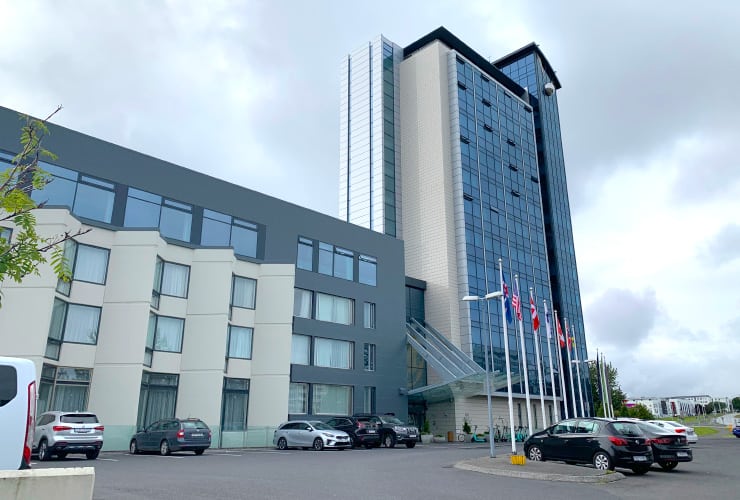
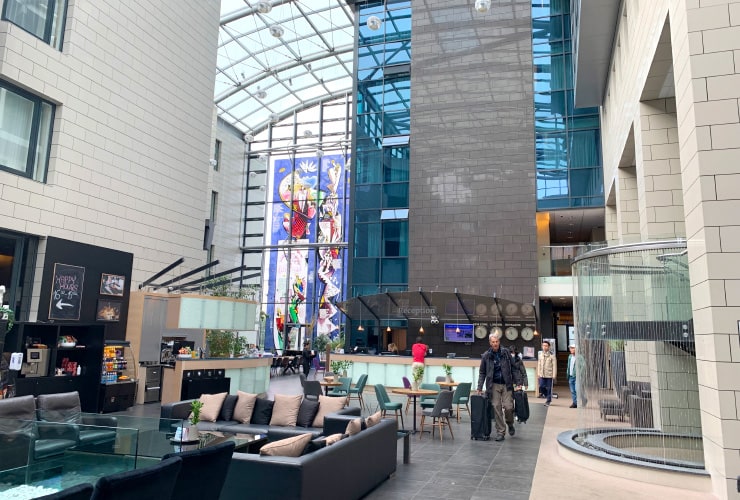
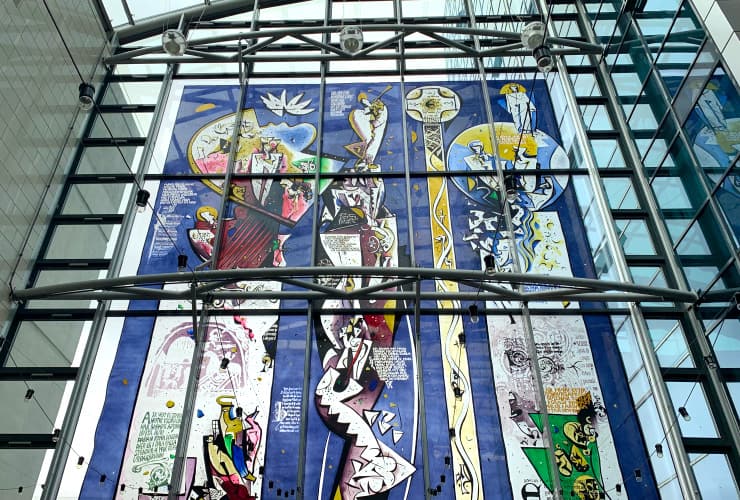
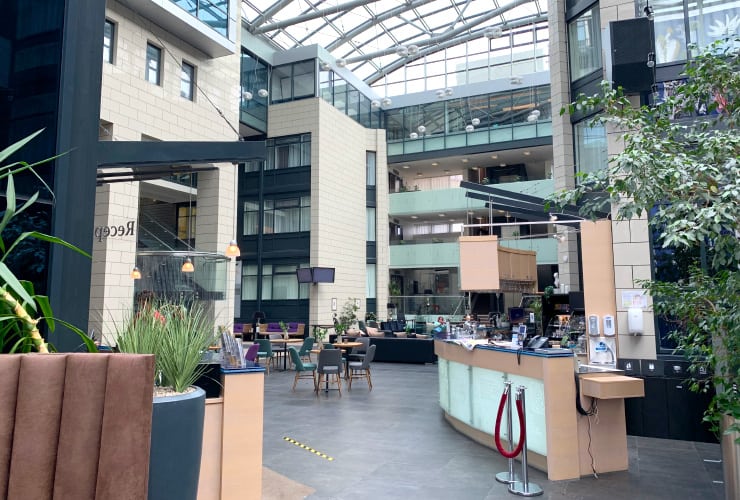
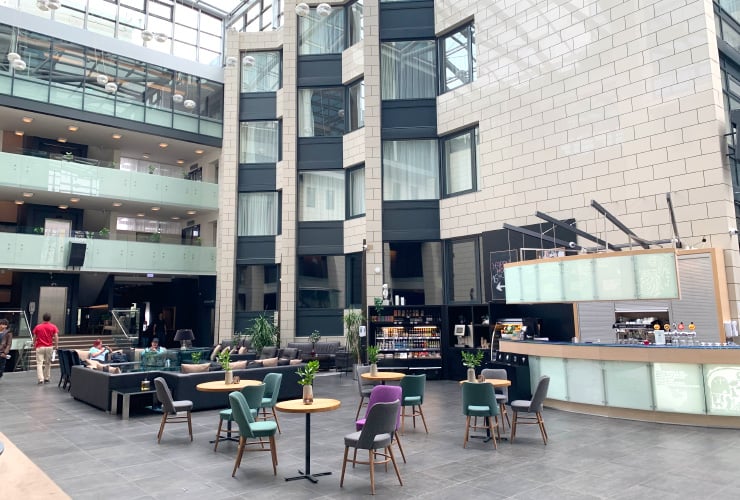
The Grand Hotel Reykjavik is a 4-star hotel located just outside the hustle and bustle of downtown Reykjavik. It’s the largest hotel in all of Iceland with its 14 floors, 311 guest rooms, 15 conference spaces along with a fitness center, Sauna/Spa and beauty salon. While the hotel and the restaurant buffet are highly regarded it is the ground floor lobby that really impresses. The wide open atrium has a large reception area, an oval waterfall, open bar, multiple gathering areas perfect for a casual meeting, vaulted glass ceiling and a fantastic 4-story stained glass mural. Even if you don’t stay at the Grand Hotel its worth a visit and a worthy addition to any list of best places to visit in Reykjavik.
Murals of Reykjavik
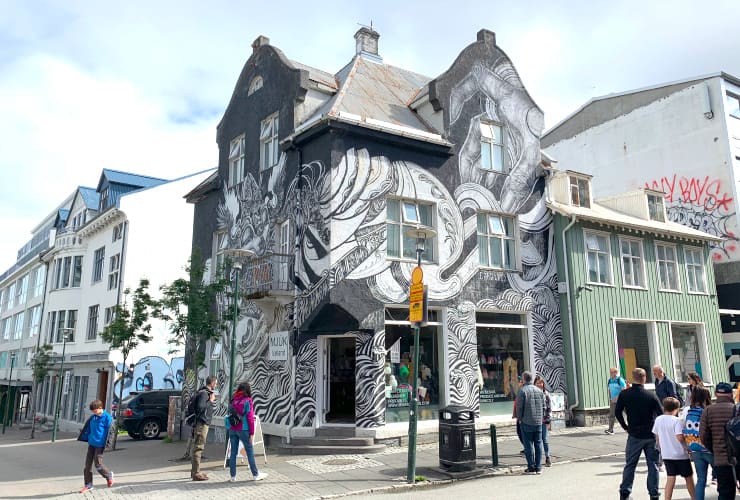
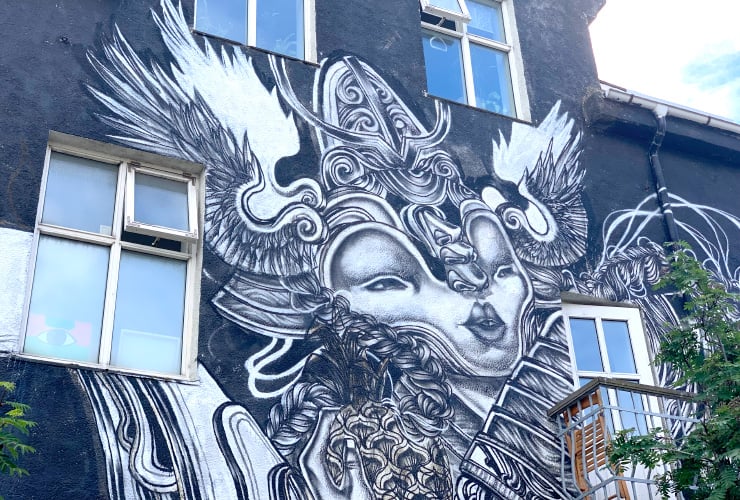
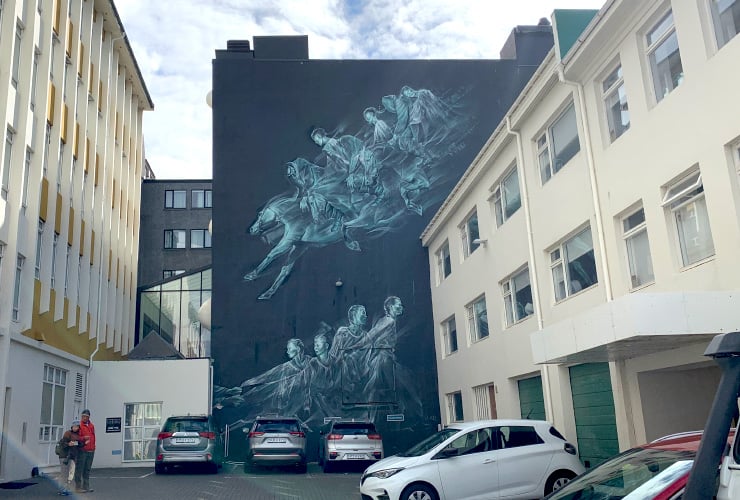
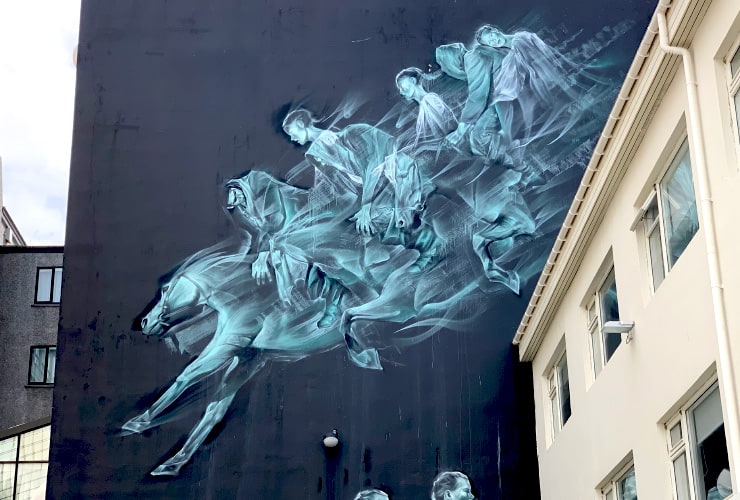
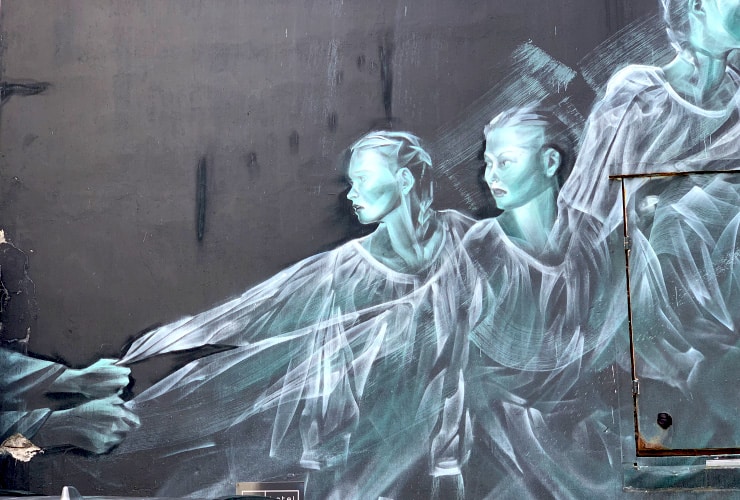
As you wander through Reykjavik keep an eye out for the multitude of murals scattered throughout the city. Some are obvious like the spectacular Viking house (Ode to Mother by Cara To aka Caratoes) at the corner of Laugavegur & Klapparstígur while others are located a bit off the beaten path like the stunning The Deacon of Myrká by Aaron Li-Hill, inspired by John Grant’s song Pale Green Ghosts, and below it Incubation by Lilja Pálmadóttir, both of which are displayed on the back west wall of the Hverfisgallerí (behind the Prime Minister’s Office). One could argue that these amazing pieces of art should be listed among the best places to visit in Reykjavik yet few casual visitors are even aware of their existence unless they accidentally stumble upon them.
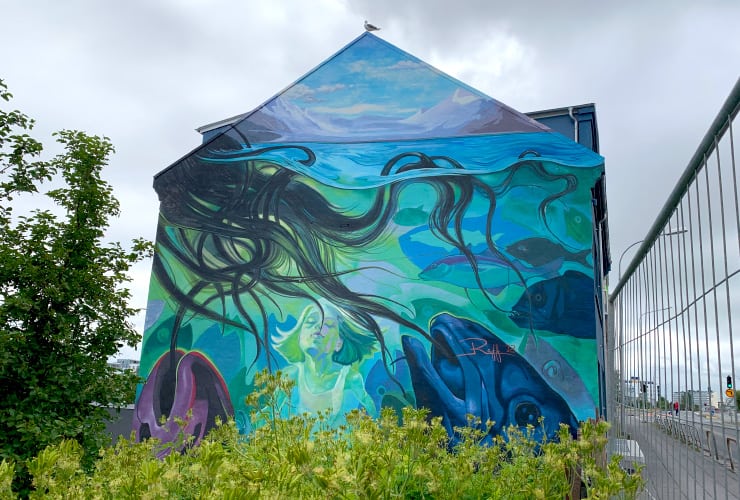
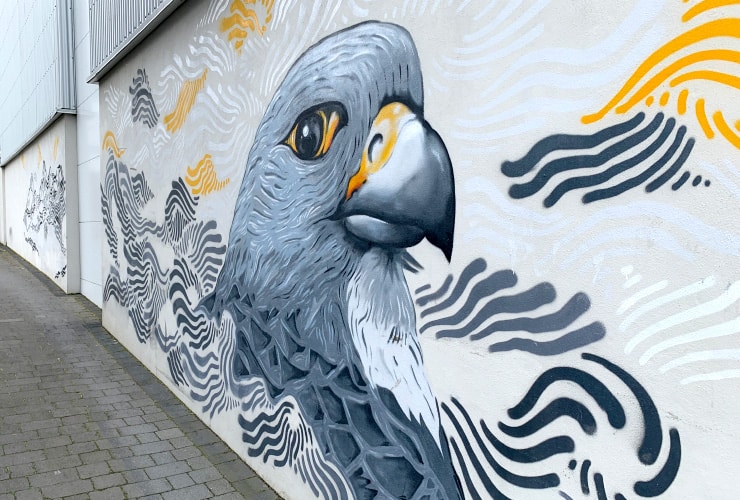
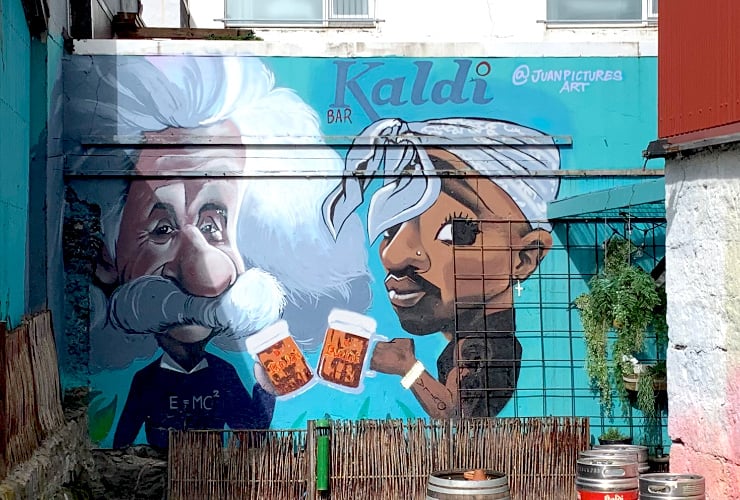
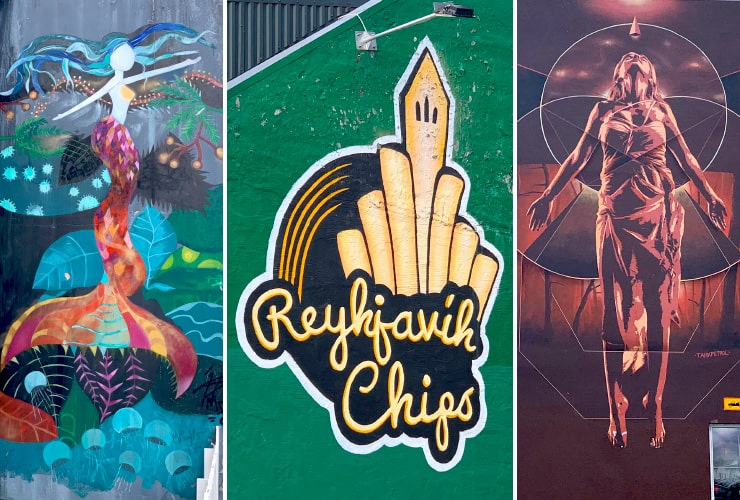
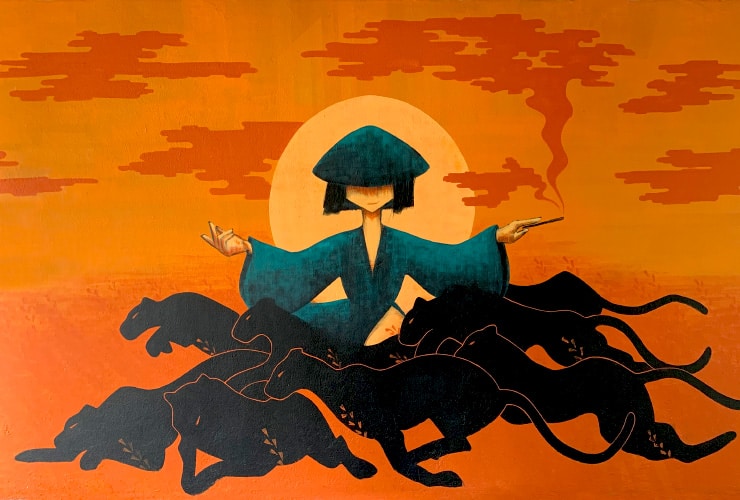
Starting in the 90’s, city officials looking to slow the spread of random graffiti around town, worked to organize collaboration between building owners and artists. One of our favorite murals is the underwater Draumur hafsins (translated Dream of the Sea) by Raff (Raffaella Brizuela Sigurðardóttir) located at 159 Laugavegur. On the southeast outer wall of Herbal Apothecary (Laugavegur 70) is an unsigned stunning gray hawk with yellow eyes that gets your attention. Another is Einstein and Tupac Shakur sharing a beer behind the Bar Kaldi at Laugavegur 20b. Some creations are simple while others are colorful and intricate like The Mermaid by Maeja Sif Danielsdottir) located at Njálsgata 23. For pure color and elegance there’s a traditional Asian exploration of meditation and black panthers by Sasko hidden behind the Eymundsson Skólavörðustíg book store.
Homes of Reykjavik
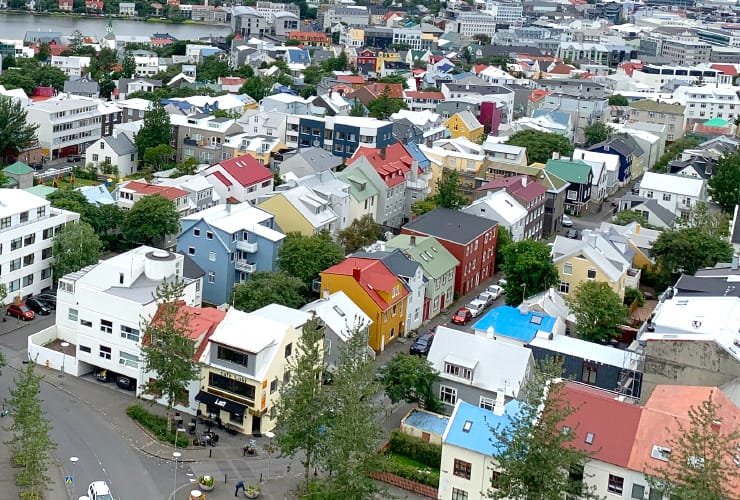
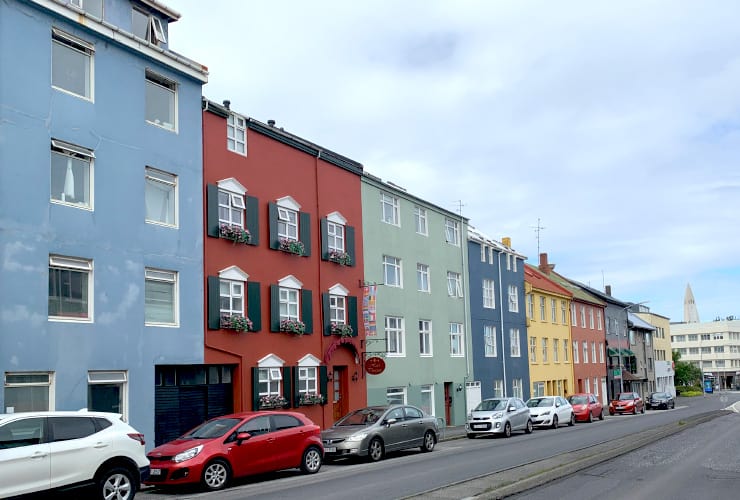
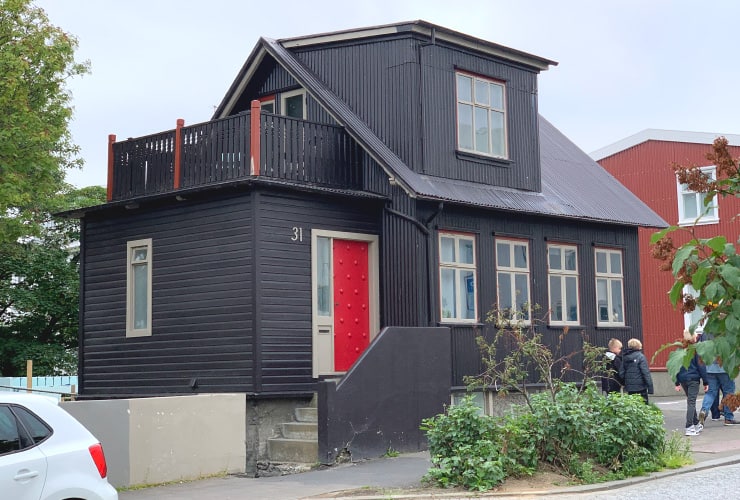
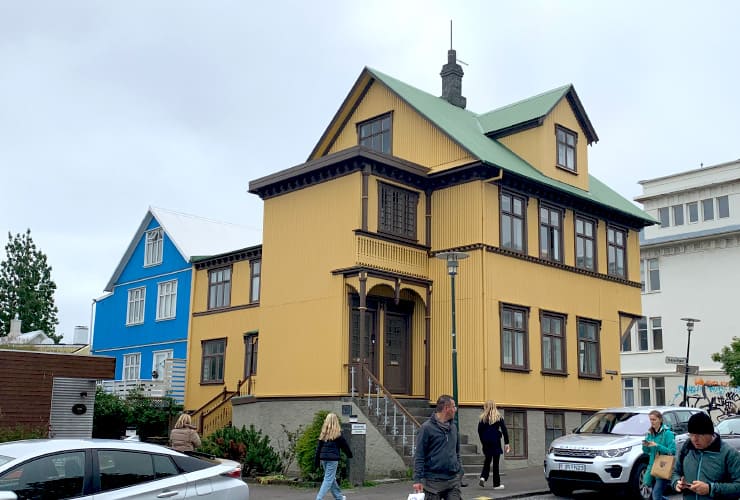
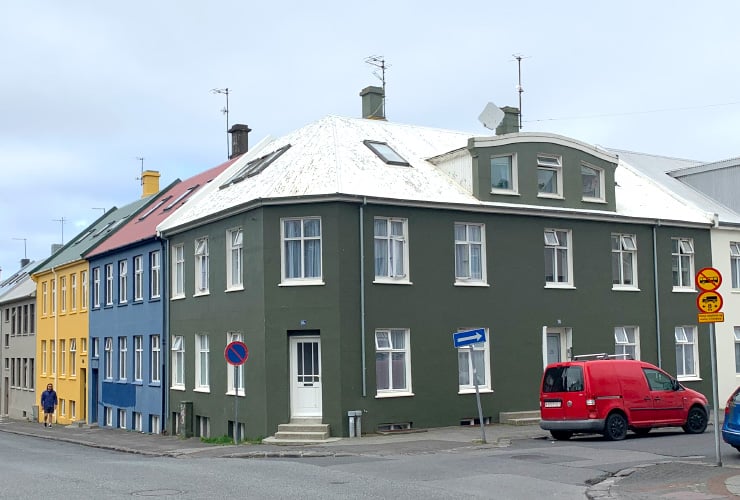
Similar to their Scandinavian neighbors, Iceland has a penchant for brightly colored homes. Aside from the fact that it serves as a welcome visual offset to the generally overcast days there is also a practical explanation. The lack of robust building materials like stone and especially wood on the island means most structures are built with steel and concrete resulting in a lot of square box-lite homes. Color then serves as a substitute for architecture for personal expression . . . and it works!

We hope you enjoyed our list of best places to visit in Reykjavik and it inspires you to visit yourself. Iceland is truly a magical place and should be on everyone’s bucket list.
We’d love to hear from you and are happy to answer any questions you may have or offer advice if desired. Happy travels!

